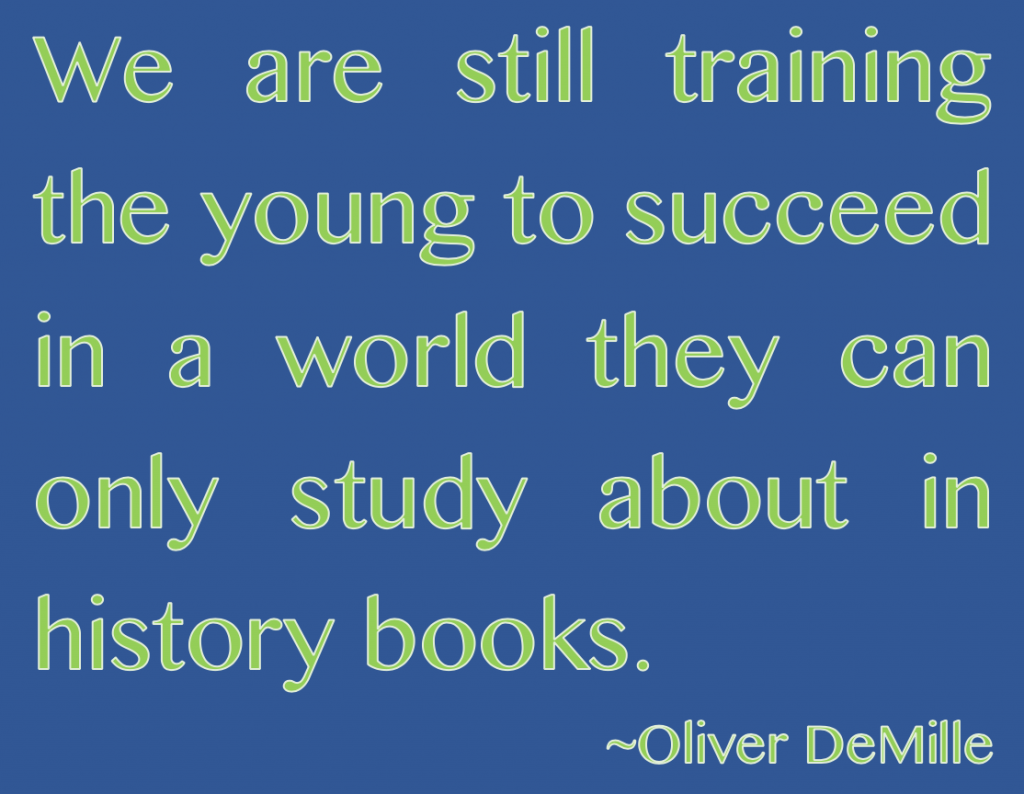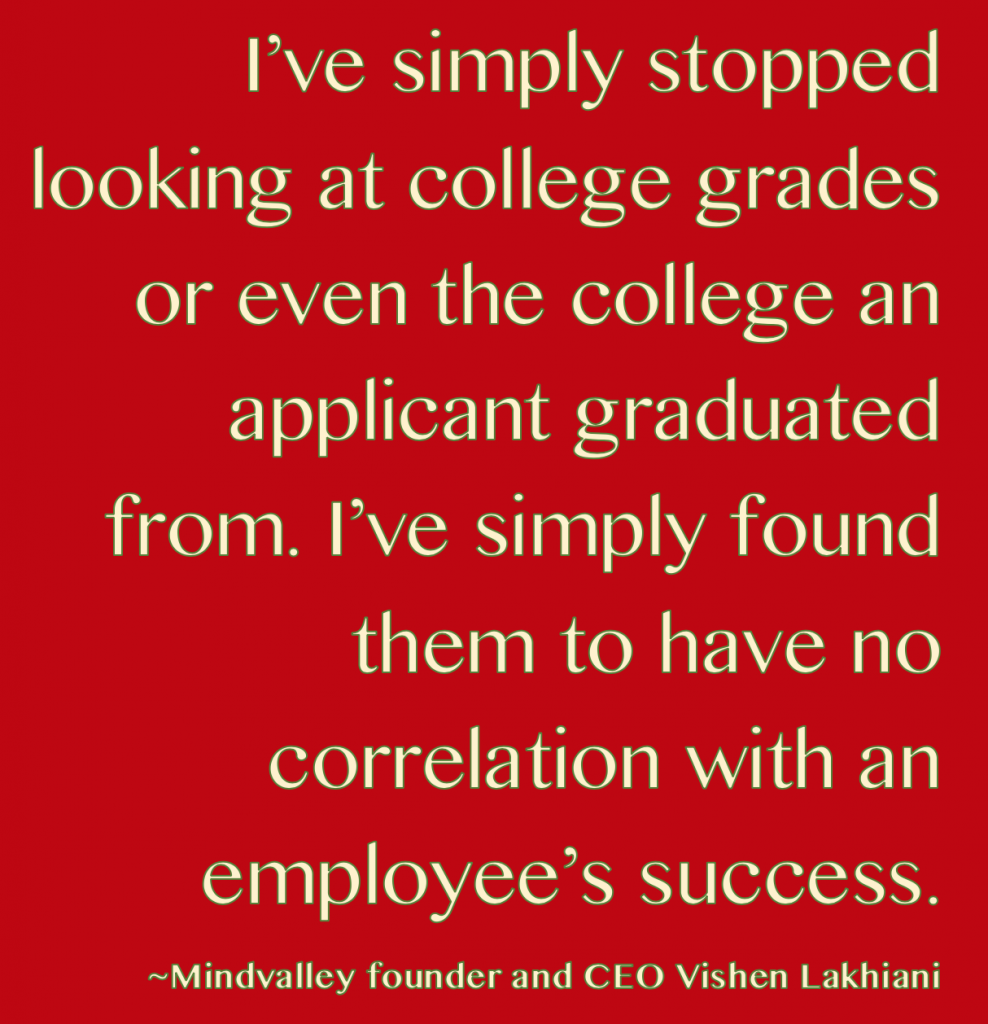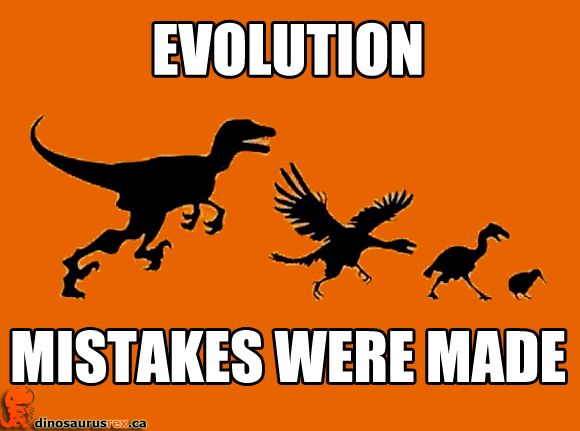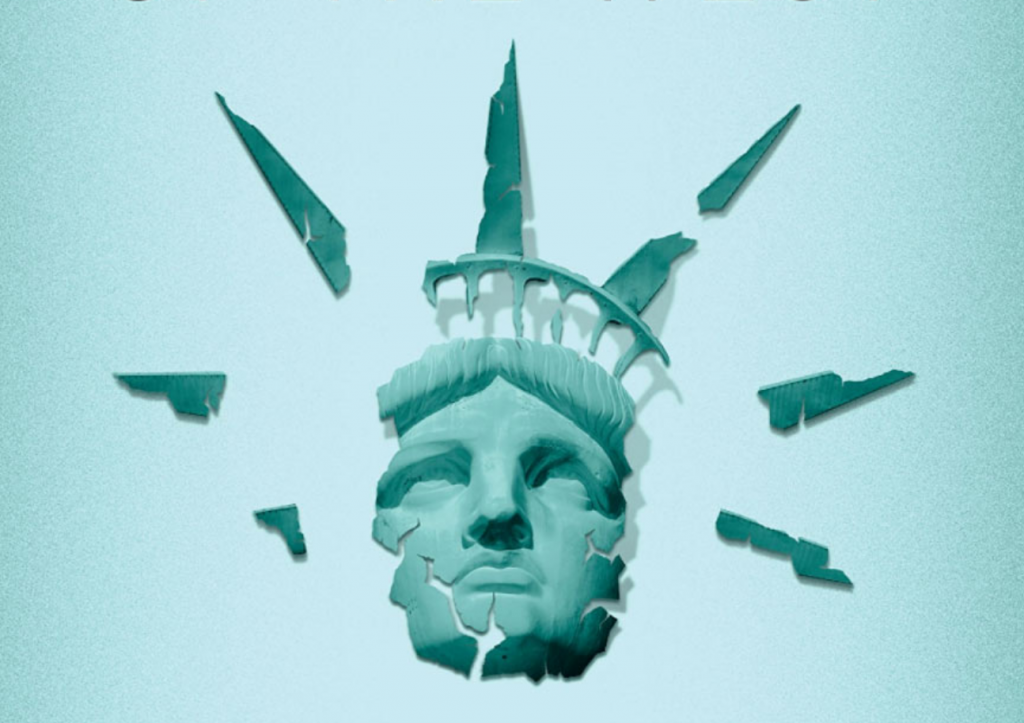The Jefferson-Madison Debates: The Third Layer
July 17th, 2018 // 7:08 am @ Oliver DeMille
“When technology advances too quickly for education to keep up,
inequality generally rises.”
—Eric Brynjolfsson and Andrew McAffee
“Your true greatness comes when you focus not
on building a career but on finding your quest.”
—Vishen Lakhiani
“Engaged students are 16 times more likely to report being academically motivated than students who are not engaged. Finding ways to engage the 40% of students who are not engaged would have a significant impact on their academic motivation.”
—Quaglia Institute
Foundations
 Education is like a map. Or, more precisely, it mirrors the entire field of maps and map-making.
Education is like a map. Or, more precisely, it mirrors the entire field of maps and map-making.
Understanding the massive change now occurring in how we make and learn from maps is in many ways directly applicable to the coming changes in education. And like in education, many people in the older generations (born before 1980, or even 2001), don’t understand that a major revolution is ahead—one so big that what we call a “map” today won’t even qualify as a map in twenty years. (And much of what we call an “education” today won’t even count as education two or three decades from now.)
The pre-modern map (Layer One) emphasized the physical traits of the earth: continents, oceans, seas, rivers, mountain ranges, islands, etc. More advanced pre-modern maps included things like ocean currents, the altitudes of mountain peaks, and the trade routes most effectively used by overland and shipping merchants.
During the modern era, we added governments to our maps (Layer Two): national borders, towns, cities, capital cities, provinces, states, counties, etc. This was part of the great shift from pre-modern to modern. Governments and their jurisdictions became as prominent in world affairs as the natural physical features of the earth. People using maps needed to know what government they’d be dealing with in a given spot as much as where the ocean currents would take them and what mountains or rivers they’d need to traverse.
Further Up and Further In
The current shift from modernism to post-modernism is equally momentous. Our maps now require another set of symbols, colors, and words—to tell us what we need to know about our world. The physical features on the maps (continents, oceans, rivers, mountains, lakes, etc.) are still there, as are the political borders that tell us what government controls each area on the illustration.
But now a third layer of understanding is superimposed on top of the physical and political levels of each map. Most people haven’t even seen such maps yet, so they think of a “map” as something made up of Layer One (mountains, rivers, oceans, etc.) and Layer Two (borders, cities, etc.). They barely fathom what else could be needed.
The post-modern Layer Three is based on what Parag Khanna calls “Connectography.” For example, look at a traditional map of Africa. The Nile is there, and the Cape. The Horn of Africa is obvious, along with the Sahara. There are regions of jungle, and large swaths of savannah. Then there are the many nations and their borders—most of them originally established by European plantation owners. Capital cities are listed in bold letters, the names of nations in larger type.
But where is Layer Three? At its most basic, Layer Three shows highways, airports, and hospitals. In a more detailed Layer Three map, you might find illustrations showing the route of pipelines, Internet cables, or even power lines. These were the simple beginnings of Layer Three maps. A little more advanced Layer Three maps don’t just tell you what road to take, they tell you how long it will take to arrive in current traffic—or redirect you if an accident occurs and is now blocking traffic. They are cast in real-time and they are always changing—truly interactive. Layer Three is a major upgrade.
But more is coming. For example, narrow the map of Africa to Kenya or Ghana. Where are the hotspots of Internet usage? Where are the Internet deserts? What about smartphone usage rates? What food is shipped to a place, and can you get the kind of banana and cereal you want while you are visiting? If you want salmon for dinner, will what you are served be farm raised or wild? – Come from the Atlantic or the Pacific? What nation’s laws governed the fishermen who caught your dinner? Such information tells you a great deal about the probable quality and freshness of what you’ll be eating, and whether or not to even order it.
Put these on the map, and you’ll begin to see how Kenya, Ghana, or any other nation in Africa, or anywhere else in the world, is actually connected. Not understanding such connectivity—or its absence in a certain area—is akin to not knowing what the political lines denoting borders signify on the map. Such ignorance basically renders the user of the map illiterate.
Consider an almost-absurd example, to illustrate:
“Are these lines just very straight rivers?” a total map novice might ask. The laughter that follows is kindly, but surprised. “How can anyone not know about government borders on a map?”
In the future, however, this will apply to much more than national borders.
A Missing Piece
Another Layer Three example is very important: For example, on the map of Kenya, what natural resources are owned by or contractually promised to Chinese companies or the Chinese government? Versus what resources are owned by or contracted to U.S. firms? Or Canadian?, Dutch?, Japanese?, Italian?, British?, French?, German?, Korean?, Indian?, etc. What multi-national companies have their own security forces at work in these places—governing, citing, controlling? Where have they blocked mobile phone and Internet service—and why? If you know the Layer Three map of Africa this way, you’ll understand the world in ways other people simply cannot grasp. As Khanna put it: “China’s relentless pursuit of [natural resource contracts around the world] has elevated…to the status of a global good on par with America’s provision of security.”[i]
In other words, if anything happens militarily in the world, the U.S. is sure to get involved (or at least consider getting involved); and if anything happens concerning natural resources—oil, minerals, food, wood, precious metals and gems, water, etc.—China is sure to jump in. It likely already has contracts signed and sealed. In fact, put alliances and treaty requirements on the map, and something stands out: China owns numerous economic resources around the globe that the U.S. does not. Moreover, as of 2015 the United States was bound by treaty to defend 67 nations in the world; China was only bound to protect 1.[ii]
In short, a lot of global resources and money are slated to flow to China in the decades ahead (it has already begun), while huge assets and cash are scheduled to flow away from the United States. One has an economy that is programmed to head up, the other down. If you don’t consult a Layer Three map, this information is unknown.
Look at the map with the Layer Three approach, however, and the future becomes immediately clear: It belongs to China. The U.S. and Europe[iii] are falling further and further behind. This is obvious on a Layer Three superimposition.
But remove Layer Three and all you have are the continents, oceans, lakes, mountains, political borders, cities and towns. Nothing about Levels One or Two tell you that China is on the rise—with contracts across the globe, and a growth rate in ownership of natural resources and supply chains for these resources that all but assure them monopoly status in the decades ahead. And this example, China, is only one of the many hugely important things missing from Layer Two maps—which are the only ones most of us ever engage.
To reiterate: the pre-modern and modern maps fail us. They don’t even tell us what we need maps to communicate (rather than merely travel) in order to help us make the best local decisions. As a result, the old maps are almost worthless. They are historical relics, but not the most effective tools of decision-making or strategy.
For that, we need Level Three maps superimposed on the older models. As Joshua Cooper Ramo put it: “Ball up your right hand into a fist. Take your left hand and open the fingers wide. Hold the hands a few inches apart. You can think of your left hand as the vibrating, living network of connection and your balled-up fist as concentrated power. Right hand, Google Maps; left hand, millions of Android phones. This is the picture of our age.”[iv] But it is only an early picture. By the time you read this, will Google Maps and Android phones be replaced by something more advanced? Not unlikely.
What is Not Seen
Again, most people today have no idea this is happening. At least not at this scope, or pace. Many feel a general sense of a rising challenge, even a threat, from China, for example. But they don’t know what it means, why it is real, or how it is developing. They have no clue how to prepare for or address it.
The same is true of education. To wit: geography is still taught in two layers—much like it was in the 1960s. Technology makes it easier to teach and learn, but Layer Three tools and Layer Three thinking are absent in all but a very few out-of-the-box classrooms or learning environments. As Toffler put it, too many of today’s young are being raised to show up on time, do repetitive tasks without complaining, follow instructions, and memorize a great deal of knowledge without deeply understanding it. This is the focus of most schools.
These three lessons—punctuality, repetitive work, and rote memorization—routinely pass for what we call “education.” They are, in fact, the key lessons of schools in modernism. The pre-modern era emphasized “the 3 R’s: readin’, ’ritin’, and ’rithmetic,” and these prepared the young for success in the agrarian economy. Likewise, the three lessons above were often effective training for landing and keeping a job during the industrial age.
But today’s emerging information economy demands something different. Success now demands the Third Layer of education. It includes the kind of knowledge learned from the 3 R’s and also post-World War II schooling in history, literature, math, science, and social studies, but it also superimposes a Third Layer of education as well, which is more attitudinal and skills based: initiative, innovation, creativity, resilience, ingenuity, tenacity, recognizing opportunities, go-getter-ness, and entrepreneurial risk-taking.
The Third Layer is as different from most modern public and private schooling as the typical 1960s, 1980s, or 2000s high school or elementary was from the one-room schoolhouse. If the pre-modern age gave us Mary and Laura in the Little House series, studying at home or the local school (which was also the town hall, town theater, and community church), the modern age gave us the high school of Pretty in Pink, The Breakfast Club, High School Musical, Dead Poet’s Society, One Tree Hill, 90210, or even 22 Jump Street.
 All are outdated now. All fail to prepare our nation’s youth for the actual economy of the 21st century. We are still training the young to succeed in a world they can only study about in history books. Indeed, it is no exaggeration to note that the more time they spend in the modern school system, including the increasingly outdated university campus, the less prepared they’ll likely be to compete effectively in the rough-and-tumble emerging global marketplace with its worldwide competition and demands.
All are outdated now. All fail to prepare our nation’s youth for the actual economy of the 21st century. We are still training the young to succeed in a world they can only study about in history books. Indeed, it is no exaggeration to note that the more time they spend in the modern school system, including the increasingly outdated university campus, the less prepared they’ll likely be to compete effectively in the rough-and-tumble emerging global marketplace with its worldwide competition and demands.
For example, a university degree isn’t what it used to be: The average graduate from the class of 2016 had $37,000 in student debt and couldn’t get a decent job in his or her field—or in any other equivalent field. There are of course exceptions, but the numbers of those leveraging college degrees into effective careers significantly decreases each decade (Note: in North America, Europe, and Latin America, but not in China). In short, today’s young adults are too often receiving a Layer Two education in a world that demands Layer Three knowledge, choices, and skills.
Past, Present, and Future
Few current students are being taught the skills of success that are needed in the new economy. The real economy. Layer Two schools simply do not teach initiative, ingenuity, or innovation. They don’t purposely teach chutzpah, audacity, grit, wise risk-taking, entrepreneurialism, or nerve.
Note that these are precisely the character traits that made America the world’s superpower. And Britain before her, and earlier, Spain and Portugal. These are the very traits that put Egypt at the top, then the Greek city states, and later Rome. These are the characteristics that gave the Gauls, Franks, Anglos and Saxons their edge.
They didn’t have Layer Three maps, to be sure, but they engaged in their era’s “Layer Three” education of the youth, teaching them the skills of resourcefulness, inventiveness, and daring in the face of difficulties. Some of these societies emphasized good purposes (such as life, liberty, and the pursuit of happiness, etc.), while others embraced less noble goals (aristocratic rule of an elite class over the rest of the people, dominance over neighboring nations, a pursuit of wealth through violence, etc.).
But whatever their dreams—good or bad—it was Layer Three skills (initiative, boldness, pluck, enterprise) that lifted every great-power nation in history to the top. As the society that now holds this spot, we (North America, and to a lesser extent Europe) are stunningly lax about teaching these traits. We increasingly downplay them as unimportant and even unattractive. Even “against the rules”. As a result, we have lost our edge. We have largely lost our drive. Too many modern Americans have lost our shared vision and purpose. Unity is a thing of the past.
Indeed, Americans were once unified in the goal to spread freedom, opportunity, and prosperity to the world. Now, the best we seem to be able to muster is a hope to afford college for our kids, and that they’ll get a safe, secure career with good benefits—and as little fuss or struggle as possible. Most colleges themselves seem committed to shielding our young adults from challenges, difficulties, thinking, and any diverse or challenging ideas. This is not the behavior of a nation on the rise. It is the opposite. To paraphrase C.S. Lewis, we are castrating the stallions of the younger generations, then hoping they’ll be fruitful.
But apply Layer Three to the map. Where in the world do we find whole populations burning passionately with drive, initiative, innovation, nerve, entrepreneurial risk-taking, resilience, a hunger to achieve, audacity, ingenuity, resolve, and tenacity? Where do we find the largest concentrations of people who thrive in the face of uncertainty and embrace whatever is hard, and flourish even in an environment of impermanence and difficulty?
When you find a lot of people who have these traits, note where they live. Not in North American or Europe (at least not in large concentrations). In our modern American schooling/career system, for example, our major focus seems to be avoiding uncertainty, impermanence, and difficulty—yet these are the unavoidable realities of the global economy.
Through the Magnifying Glass
Look even closer. Enter this data electronically on a map and you’ll find these traits in China. Indeed, the heartbeat of China is a new “eye of the tiger.” A similar fire burns in India, and a less populated but angrier flame blazes across the Middle East. Layer Three also shows us the rise of such passion in parts of Latin America, Africa, and Russia. These are trigger-points of the decades just ahead.
Where such passion does show up in North America—from California to British Columbia, from Texas to New Hampshire to Newfoundland to Florida, it is usually personal, career-oriented, and commercial. A better job. A marketable education. A promotion.
These hardly match the resolve or intensity of China and its new economic allies across the developing world. They want to lead the world, change the world, and do great things. They want victory, and they see their lives as part of a battle.
In Europe the irony is even more pronounced. The Layer Three map shows numerous pockets of extreme passion in the nations of the E.U.—but zoom in, and you’ll note that most of the people with this kind of fire in the belly are usually recent immigrants from the Southern half of the globe.
The one great exception in North America and Europe is the entrepreneurial class, those who Steve Jobs called the dreamers, the rebels, and the risk-takers. They graduate from college and reject job offers from the Fortune 500 to pursue risky start-ups or launch non-profit charities. Or, increasingly, they skip college altogether, or drop out, and get started on their business or charitable ventures even younger, with an edgier, more idealistic and relevant education.
Their Layer Two parents and grandparents try to talk them out of such endeavors, but these young people have a hunger that typical education and careers won’t fill. They are a Remnant, throwbacks to the earlier Americans who got on the Mayflower, worked and died in Jamestown, went West by horseback or wagon to explore, start, create, and change things. They are the New American Founders, enlightened and ennobled by hindsight of the mistakes of the past, and impassioned by their view of the future – and we desperately need them.
We need a generation of them.
Now.
In the Now
If you are one of their parents or grandparents—worried that your youth are making such choices, decisions that make no sense to you—you can relax. Yes, the kind of risky leadership they are engaging is scary to the older generations who were raised to seek security. But the Third Layer maps clearly show that we no longer live in an era of security.
Even young people who follow the traditional path of college and career suggested by their elders will find that for most people it doesn’t endure in the new economy. We are in an era of tumult, change, and uncertainty—and this is only going to increase for the next few decades.
Those who try to live by Second Layer rules will fall further behind. College degrees won’t bring most of them secure jobs, and seemingly secure careers will suddenly be lost to recessions, new technologies, outsourcing, mergers, regulatory changes, companies sold to foreign investors, and competition, along with a host of other unforeseen realities.
Indeed, those who will do the best in the new economy—whose contributions and livelihoods will end up being the most secure—will be the new entrepreneurial class. The innovators. The roll-with-the-punches change agents. Those who can think, lead, initiate, and wisely assess risk. We are indeed entering the Age of Risk, and this massive shift in the world economy is here to stay. Business has already caught on and is changing things to meet the new reality. But education is still in denial, along with most in government.
Sadly for those who allow themselves to be swayed by the current denial of many in the educational sector and Washington, people caught in Second Layer thinking will be the losers of the next thirty years. The winners will be Third Layer risk takers who tenaciously create ways to succeed in the new environment. Who make a way.
Many of them are already looking at the world through the lenses of Third Layer maps and mindsets, and they understand something very real: The future is theirs. Moreover, our future is in their hands.
The more we can do to help and support them, the better things will turn out for all of us. The successes and failures of our entrepreneurs will determine the future. Just as it has determined the past.
Fall or Rise
This reality causes serious concerns. Anyone who takes a good look at the current university campus model of learning finds a number of problems. Not the kind of challenges that demand reform, mind you, but rather a systemic, structural network of problems that will require a true educational revolution. The need for change is, to put it lightly, drastic.
Just consider the following commentaries by some of today’s top thinkers on the topic of the emerging economy and its ties to the type of education we now need. For example, MIT’s Eric Brynjolfsson and Andrew McAffee wrote, in a section of their book labeled “Failing College”:
“Richard Arum and Josipa Roska…and their colleagues tracked more than 2,300 students enrolled full-time in four-year degree programs at a range of American colleges and universities. Their findings are alarming: 45 percent of students demonstrate no significant improvement on the CLA [Collegiate Learning Assessment, which tests ‘critical thinking, written communication, problem solving, and analytic reasoning’] after two years of college, and 36 percent did not improve at all even after four years.
“The average improvement on the test after four years was quite small…. What accounts for these disappointing results? Arum, Roska, and their colleagues document that college students today spend only 9 percent of their time studying (compared to 51 percent on ‘socializing, recreating, and other’), much less than in previous decades, and that only 42 percent reported having taken a class the previous semester that required them to read at least forty pages a week and write at least twenty pages total.
“They write that, ‘The portrayal of higher education emerging from [this research] is one of an institution focused more on social than academic experiences. Students spend very little time studying, and professors rarely demand much from them in terms of reading and writing.’
“They also find, however, that at every college studied some students show great improvement on the CLA. In general, these are students who spent more time studying (especially studying alone)…”[v]
The authors also wrote: “The good news, though, is that technology is now providing more…opportunities than ever before. Motivated students and modern technology are a formidable combination. The best educational resources online allow users to create self-organized and self-paced learning environments—ones that allow them to spend as much time as they need with the material, and also to take tests that tell them if they mastered it.”[vi]
Futures Past
The quality of learning in such online venues is very often extremely high. For example, when a graduate level AI course at Stanford was opened to participants on the Internet for free, over “160,000 students singed up for the course. Tens of thousands of them completed all exercises, exams, and other requirements, and some of them did quite well. The top performer in the course at Stanford, in fact, was only 411th best among all the online students. As Thrun [the instructor] put it, ‘We just found over 400 people in the world who outperformed the top Stanford student.’”[vii]
Likewise, “…Laszlo Bock, Google’s senior vice president of people operations, notes that college degrees aren’t as important as they once were. Bock states that ‘When you look at people that didn’t go to school and make their way in the world, those are exceptional human beings. And we should do everything we can to find those people.’ He noted in a 2013 New York Times article that the ‘proportion of people without any college education at Google has increased over time’—on certain teams comprising as much as 14 percent.”[viii]
 Mindvalley founder and CEO Vishen Lakhiani wrote: “I’ve personally interviewed and hired more than 1,000 people for my companies over the years, and I’ve simply stopped looking at college grades or even the college an applicant graduated from. I’ve simply found them to have no correlation with an employee’s success.”[ix] Sadly, too many people still hold on to old educational models that no longer deliver what they once did, or what they now promise.
Mindvalley founder and CEO Vishen Lakhiani wrote: “I’ve personally interviewed and hired more than 1,000 people for my companies over the years, and I’ve simply stopped looking at college grades or even the college an applicant graduated from. I’ve simply found them to have no correlation with an employee’s success.”[ix] Sadly, too many people still hold on to old educational models that no longer deliver what they once did, or what they now promise.
Lakhiani put it this way: “But here’s the problem. Most of us are using systems that have long [since] become obsolete. As Bill Jensen said in his book Future Strong: ‘Even as we enter one of the most disruptive eras in human history, one of the biggest challenges we face is that today’s systems and structures still live on, past their expiration dates. We are locked into twentieth-century approaches that are holding back the next big fundamental shifts in human capacity.’”[x]
Bestselling author Neil Pasricha told the following story: “A senior partner at a prestigious global consulting firm once said to me after a boozy dinner: ‘We find Type A superachievers from Ivy League schools who need lots of reward and praise…and then dangle carrots just over the next deadline, project, and promotion, so they keep pushing themselves. Over every hill is an even bigger reward…and an even bigger hill.’”[xi] This is enlightening. It’s not the actual education the big corporations are looking for as much as a sense of over-achievement and needing lots of rewards and praise.
Look at this same scenario from the student’s viewpoint. Is this really the career environment we want our young people to pursue? Is this the life we want for them, or the use of their talents that will best benefit the world—or bring them the most fulfillment and happiness? Sometimes, the answer may be yes. But very often, it isn’t.
Billionaire Paypal co-founder and educational innovator Peter Thiel said it even more bluntly: “Higher education is the place where people who had big plans in high school get stuck in fierce rivalries with equally smart peers over conventional careers like management consulting and investment banking. For the privilege of being turned into conformists, students (or their families) pay hundreds of thousands of dollars in skyrocketing tuition that continues to outpace inflation. Why are we doing this to ourselves?”[xii] After happily reminiscing that he eventually took the entrepreneurial path of founding tech companies instead of following his major in graduate school, Thiel said[xiii],
“All Rhodes Scholars had a great future in their past.”
The Next Normal
The modern college/career system, which is increasingly Level Two education in the new economy, is more and more outdated. In the book Platform Revolution, technology experts Geoffrey G. Parker, Marshall W. Van Alstyne, and Sangeet Paul Choudary argue that the old-style university model is surviving largely because government regulations keep true innovators from competing on anything close to a level playing field.[xiv] If this were to change, no doubt online educational platforms would do for education what Amazon has done for bookstores (and other retailers), Uber has done for taxi services, Wikipedia has done to the encyclopedia publishing industry, and online news sources have done to many newspapers.[xv] Again, over 400 online students tested better than the top Stanford student in the exact same class.
Parker, Alstyne, and Choudary wrote: “The long-term implications of the coming explosion in educational experimentation are difficult to predict with certainty. But it wouldn’t be surprising if many of the 3,000 colleges and universities that currently dominate the U.S. higher education market were to fail, their economic rationale fatally undercut by the vastly better economics of platforms.”[xvi]
Just imagine much cheaper and higher quality higher educational offerings for all. Consider the work by Khan Academy,[xvii] Minerva,[xviii] Peter Thiel, and other educational innovators. If the government ever ends the current educational monopoly supporting the old-style conveyor-belt approach to higher education, the results will likely dwarf the kind of change we witnessed with the advent of cable television programs, or when Ma Bell was deregulated and replaced by an entirely different kind of telecommunications.
Parker and his colleagues also noted:
“In the years to come, the spread and increasing popularity of teaching and learning ecosystems will have an enormous impact on public school systems, private schools, and traditional universities. Barriers to entry that have long made a first-class education an exclusive, expensive and highly prestigious luxury good are already beginning to fall.
“Platform technologies are making it possible for hundreds of thousands of students to simultaneously attend lectures by the world’s most skilled instructors, at minimal cost, and available anywhere in the world that the Internet is accessible. It seems to be only a matter of time before the equivalent of a degree from MIT in chemical engineering will be available at minimal cost in a village in sub-Saharan Africa.
“The migration of teaching to the world of platforms is likely to change education in ways that go beyond expanded access—important and powerful as that is. One change that is already beginning to happen is the separation of various goods and services formerly sold as a unit by colleges and universities. Millions of potential students have no interest in or need for the traditional college campus complete with an impressive library, a gleaming science lab, raucous fraternity houses, and a football stadium.”[xix]
They’d rather pay a lot less and get a better learning experience.
Focusing In
“Education platforms are also beginning to unbundle the process of learning from the paper credentials traditionally associated with it.”[xx] The authors note that many students now “…appear to be more interested in the real-world abilities they are honing than in such traditional symbols of achievement as class transcripts or a diploma.”[xxi] They want to learn knowledge and skills that help them achieve their life and financial goals, not traditional symbols that no longer really work in the 21st century economy.[xxii] Results-Based Learning is increasingly in demand.
For example, “A high ranking on TopCoder, a platform that hosts programming contests, will earn a developer a job at Facebook or Google just as fast as a computer science degree from Carnegie Mellon, Caltech, or MIT. Platform-based students for whom a traditional credential is important can often make special arrangements to receive one—for example, at Coursera, college credit is a ‘premium service’ you pay extra for.”[xxiii] Another example is Duolingo, a crowdsourcing foreign language platform that is teaching more people a foreign language than all the students studying foreign language “in high school in the U.S. combined.”[xxiv]
“Once there is an alternative certification [to college degrees] that employers are willing to accept,” Parker and his colleagues affirm, “universities will find it increasingly difficult…. Unsurprisingly, developing such an alternative certification is among the primary goals of platform education firms such as Coursera.”[xxv] Other organizations are trying to build such educational platforms as well, including Udacity, Skillshare, edX, and others.[xxvi] Even top specialty schools, like MIT and Julliard, are offering open enrollment online courses. (Their selling point is often focused on “Learn from the MIT faculty,” or “Learn from the Julliard faculty,” a nod to the new reality that mentoring is becoming even more important than institutionalism.)
No doubt more innovative higher educational options will thrive (and at the high school level as well), until some of them restructure modern education like eBay, Amazon, Facebook, Uber, the Internet, or Google have done for other fields. As far as student learning is concerned, numerous self-produced online tutorials, on platforms like YouTube and others, provide excellent educational opportunities—both to learn and teach.
All of these developments and trends are part of Third Layer education, and they are almost universally moving away from outdated traditions, methods, and beliefs of conveyor-belt-style education and schools. A new economic era is already here, and for those who know what to look for, new educational models are rising to support what is now needed. Third Layer, Results-Based learning is the future of effective education. The focus is on individualized learning, thinking, and applying rather than conveyor-belt schooling.
The new maps are here, if we’re willing to look.
(This topic is addressed in more detail in Hero Education by Oliver DeMille, available here>>)
[i] Parag Khanna, 2016, Connectography, xvii.
[ii] Harper’s Index, Harper’s Magazine, September 2015.
[iii] The Brexit and election of Donald Trump didn’t seem to make much difference in this trend. See, for example, Geoffrey Smith, “The Brexit Crisis That Wasn’t,” Fortune, October 1, 2016; See also, Jeff Immelt, “After Brexit, Global is Local,” Fortune, August 1, 2016, 71-72.
[iv] Joshua Cooper Ramo, 2016, The Seventh Sense, 122.
[v] Erik Brynjolfsson and Andrew McAfee, 2014, The Second Machine Age, 197-198.
[viii] Cited in Vishen Lakhiani, 2016, The Code of the Extraordinary Mind, 24.
[xi] Neil Pasricha, 2016, The Happiness Equation, 150.
[xii] Peter Thiel, 2014, Zero to One, 36.
[xiv] See Geoffrey G. Parker, Marshall W. Van Alstyne, Sangeet Paul Choudary, 2016, Platform Revolution, 263-268.
[xvii] For example, see commentary in Brynjolfsson, 199.
[xviii] For example, see commentary in Parker, 268.
[xxvi] See, for example, ibid., 265.
Category : Blog &Business &Citizenship &Community &Culture &Current Events &Economics &Education &Entrepreneurship &Generations &Government &History &Independents &Information Age &Leadership &Liberty &Mini-Factories &Mission &Politics &Producers &Prosperity
Jefferson Madison Debates: John Adams on How to Fix Washington D.C. in 1791 and 2018
June 28th, 2018 // 7:26 pm @ Oliver DeMille
“Odd, that so many should favor frames that seemed to be trying to outdo the art they held.”
~Brandon Sanderson, The Alloy of Law
What You Think You See
 In the old American West, a façade town featured two- and sometimes three-story buildings lining Main Street, so visitors to the town would be impressed with how up-and-coming the community must be.
In the old American West, a façade town featured two- and sometimes three-story buildings lining Main Street, so visitors to the town would be impressed with how up-and-coming the community must be.
But when a person walked around to the side and back of the buildings, it turns out they’d find mostly one-story structures—sometimes little better than shacks or huts.
A few were even a façade built on the front of a rickety lean-to.
Some were respectable buildings, but they were usually made of adobe or pine rather than the fine hardwood edifices promised by their Main Street facades.
And, as I mentioned, they were only one story tall despite their appearance from the front.
Indeed, the only purpose of the two- or three-story façade was to impress.
In modern times, the idea that perception is reality has reached the level of myth.
To Conform or Not To Conform
It is taught in various circles as unquestioned truth, parroted in movies and television programs as a lasting principle, and often used to scold would-be individualists into working harder to conform and fit in.
“We must impress others to get ahead in the world,” the common wisdom seems to assure us.
C.S. Lewis lambasted this view in his classic, “The Inner Ring.”
If you spend your life trying to impress and fit in, as almost everyone does, he warned, you’ll waste a lot of time and energy and miss many of the important things that really matter in life.
Moreover, he predicted, you’ll fail to appeal to the only real society of substance, the other people who ignore trying to impress and fit in and instead set about doing good things in the world without worrying what others think.
He called this group the true inner ring, whose motto was something along the lines of “perception is merely perception—truth, reality, integrity and quality are what matter.”
John Adams wrote about this topic in his little-known and seldom-read classic, Discourses on Davila, which may be his best book next to Defence of the Constitutions of the United States (in fact, he referred to Davila as the fourth volume of Defence).
He said that nearly every person is plagued by a debilitating desire to be esteemed by others, to impress and fit in, to be admired, and that this is the basis of many human flaws including jealousy, envy, ambition, vanity, hatred, revenge, pride, and most human pain.
These are Adams’ specific words.
Adams said this desire for admiration is as real as hunger, and the cause of more suffering, anxiety, stress and disappointment than famine.
In contrast, the really good things in life, including virtue, nobility, honor, loyalty, wisdom, service, strength and so on, may or may not increase the admiration of others, but are often valued only to the extent that they do.
Competing for Mediocrity
Sadly, many people seek these things only if, and to the degree that, they increase admiration from others.
Far too many things are sought by mankind only because they attract “attention, consideration, and congratulations…” Adams said.
Likewise, too many good and important things are not pursued by many people because they do nothing to boost one’s status or station.
By the way, the point of Adams’ book on Davila is to show that because of basic human nature—built on this inner drive of nearly all men and women to rise in station, and not just to rise, but to rise above other people—there will always be conflicts in human societies and institutions.
His solution was to create separate branches of power, and to set up the government so these branches could check and balance each other in a way that no one government entity could become too powerful.
The result, he said, would be that the people in the nation would be able to live free of overreaching government.
In the process of making this argument he spends a great deal of time showing that this drive to fit in, impress, and in fact outdo other people (by being more impressive and fitting in better than them), was a serious obstacle to human happiness in families, schools, business and all facets of society.
When people become more knowledgeable and learned, for example, they tend to engage in more, not less, conflict with other learned persons.
He was not talking of debate, but of serious conflict.
Thus our schools and great universities, which could be the salvation of society in many ways, are distracted from their potential because their leading inhabitants are constantly striving for Reputation, Notoriety, and Celebration.
These three words are those used by Adams, which he capitalized for emphasis in his book.
Likewise, Adams laments, our branches of government are unable to truly lead because those who should be our best hope for great progress immediately, upon being elected or appointed to office, set out to compete with all other officials for more Fame, Glory, Reputation and Credit.
Again, these are Adams’ words.
Growing or Shrinking
Voters send representatives, presidents and others to do their will, to improve things, but the real work of most men and women lifted to leadership is to win this contest with each other.
“Improve the Nation, or Impress the Nation. That is the question.”
And the drive to impress nearly always wins the day.
Adams wrote of humanity’s so-called honors in withering terms:
“What is it that bewitches mankind to marks and signs? A ribbon? a garter? a star? a golden key? a marshall’s staff? or a white hickory stick?”
He is mocking us now.
“Though there is in such frivolities as these neither profit nor pleasure, nor anything amiable, estimable, or respectable, yet experience teaches us, in every country of the world, they attract the attention of mankind more than…learning, virtue, or religion.”
Furthermore, Adams continues, they are sought by the poor, who believe such honors will lift them to equal status with the rich, and they are sought by the rich, who believe that without these symbols they will be lowered to the status of the poor.
This is the great challenge of human progress—we ignore our great potential to focus on silly attempts to impress.
We do it as children, as youth, as adults, and in old age.
The solution, in the case of academia, is to closely avoid putting scholars or administrators in charge of education, but leave oversight to the parents.
For government, the fix is to allow the people to frequently replace their officials at the election booth—to remove them as soon as they forget to do what the people sent them for.
Symbol Above Currency
Adams points out that ribbons, medals, titles, and other symbols of man’s honor, including the white hickory sticks of certain secret societies, aren’t of much use in real life.
Though, if you are freezing, the hickory stick can at least be ignited and bring some warmth.
But these ornaments are nevertheless widely sought because they are symbols of acceptance, fitting in, and impressing others.
Such symbols show that, in fact, the Status Motive is even stronger in humanity than the Profit Motive.
Indeed, giving war heroes and others who accomplish great acts of heroism large sums of money, cars, vacations or estates would be seen as crass by most modern eyes.
Yet these are exactly what many of the ancients gave their champions and heroes, though chariots and carriages were more in vogue than cars.
We give symbols for the highest achievements, precisely because their lack of monetary value communicates just how highly we esteem them—far above money.
For Adams, the honors and symbols are frivolities only because we seek the honors and symbols rather than the actions for which they are awarded.
This is deep insight into human nature, because for true heroes the ribbons and medals mean much less than simply knowing what they did.
Flattery and Failure
It is wonderful to honor heroic acts that truly merit our admiration and thanks, but too often, as Adams puts it, the “great majority trouble themselves little about merit, but apply themselves to seek for honor…”
This is a serious indictment.
He further says that most people try to gain such honors not by going out and serving in ways that merit them.
Such service would be too difficult, or dangerous, or risky.
Besides, just meriting great honors doesn’t ensure that one will receive them.
After all, we are assured, “perception is reality”.
So many people decide that a much better course is to ensure the world’s admiration the old-fashioned way, by directly seeking prestige and hiring publicists, PR firms, and commissioning scholarly studies and the support of experts.
Adams says it this way:
“…by displaying their taste and address, their wealth and magnificence, their ancient parchments, pictures, and statues, and the virtues of their ancestors; and if these fail, as they seldom have done, they have recourse to artifice, dissimulation, hypocrisy, flattery, empiricism…”
But this is more than an interesting philosophical discussion about human nature.
It actually cuts to the very heart of reality.
Because of our thirst for honors, and because façade honors are easier to obtain, all our manmade institutions eventually fail.
Adams mourns that government cannot solve the problems of humanity, nor will institutions of commerce and business.
Plague of Power
Families and churches come the closest, but even here we spend the generations warring about whether husband or wife should be the head, how long fathers should maintain dominance over their sons, and whether newly married couples now report to paternal or maternal grandfathers.
Likewise, too many churches in history took up arms against unbelievers, and various religions and secular groups resort to violence when they fail to convince in other ways.
Indeed, as soon as men create institutions of any kind, they usually begin to war—within the institution and/or with other institutions.
The solutions, the real fixes to our challenges, Adams teaches, will not come from manmade institutions.
We should set up the best institutions possible, but we can’t rely on them for everything because man’s hunger for approval and applause is always at work undermining progress.
Adams quotes the English poets to make his point:
“The love of praise, howe’er conceal’d by art,
Reigns, more or less, and glows, in every human heart;”
—Edward Young
“All our power is sick.”
—William Shakespeare
If “All our power is sick”, indeed. If so, how can mankind progress?
It turns out there is a solution, and Adams is excited to share it.
Building Greatness
In the cases of family, church, relationships and business, one should simply dedicate one’s life and efforts to truly serving in genuine, if challenging, ways that really make a positive difference.
This was also recommended by C.S. Lewis, who said to ignore trying to impress and instead set out to genuinely serve.
Both Adams and Lewis note that such service is only authentic when we give up concern about getting the credit.
But Adams wants our political leaders to do the same.
He sees real government leadership as deep, committed service, devoid of seeking credit or reward.
He doubts that many will truly forget their drive to impress and seek only to frankly serve, but he holds out hope that a few will rise to such heights of true leadership.
The best honors for such exceptionally great leaders aren’t the praise or baubles of men but the highest of all tributes—emulation.
And in this Adams gives us mankind’s solution to its biggest challenges.
Specifically, while mankind limits itself from great achievements to fight the petty battles of impressing others, becoming more impressive than others, fitting in, and fitting in better than others, the solution is to emulate those who do it better.
What Leadership Is
Parents who emulate great parents are the hope of the world, as are great teachers, inventors, artists, statesmen, leaders, entrepreneurs and others who emulate the greats.
Emulation includes improving upon the best of the past, and as generations of parents and other leaders emulate the best and improve upon it, the world drastically improves.
This, as Adams puts it, is a desire not to impress and fit in, “but to excel,” and “it is so natural a movement of the human heart that, wherever men are to be found … we see its effects.”
Moreover, Adams assures us, it blesses communities and society as much as it helps individuals succeed.
For those who are religious, nothing is more effective than trying to emulate the Son of God, the great prophets, Buddha, and other examples of charity, service and wisdom.
We fall short in many ways, but in trying to answer the question, “What Would Jesus Do?,” as the modern saying goes, we reach for our very best.
Our greatest heroes, regardless of our views on religion, should be the great men and women of history whose sacrifice and greatness makes them most worthy of emulation.
Emulation is as strong an emotion as seeking admiration, and in fact most children learn emulation first.
Which brings us to the topic of this article—How to fix Washington and put America back on track as a standard for freedom, opportunity and goodness in the world.
According to John Adams (and C.S. Lewis, Alexander Solzhenitsyn, and many others), the answer is not to turn to leadership from our big institutions, even if they have as much power as the White House, Congress, Wall Street, Hollywood, Silicon Valley, the Justice Department, the Federal Reserve or even the Supreme Court and Madison Avenue.
The solution lies in leadership, but not from the top down.
We will not get back on track as a society until we lead from below, until we become a society of leaders, and the right kind of emulation is our most powerful means of lasting influence and change.
Who you and I choose to emulate—really, truly, deeply, fully—will determine the future.
Becoming Our Future
It is the most powerful symbol, because who we want to be like on the greatest days of our lives will color the rest of our time on earth.
But it is much more than a symbol.
Too much of modern life is merely a façade.
Too many of our institutions are hollow shells of what we need them to be—and of what they claim to be.
Too often we choose the path of prestige over the path of quality.
Too frequently we listen to the credible rather than the wise.
Too many of our hours and days are spent on the things that are least important.
It was Nietzsche, I think, who said that modernism began when we started substituting the morning paper for our morning prayers.
Allan Bloom called this the closing of the American mind.
Adams told us that such things are hollow, but in the Information Age the voice of understanding is too frequently drowned out by the roar of the crowd.
In all this, however, there is an anchor.
Who we decide to emulate, and how faithfully we do so, will make the future.
And that goes for Washington as well.
Category : Blog &Citizenship &Community &Constitution &Culture &Current Events &Economics &Education &Generations &Government &History &Independents &Information Age &Leadership &Liberty &Mission &Politics &Service &Statesmanship
The Jefferson-Madison Debates: To Pay, or Not to Pay…
June 12th, 2018 // 10:12 am @ Oliver DeMille
Tackling a Universal Basic Income
(Book Reviews: Annie Lowrey, 2018, Give People Money;
Richard Weaver, 1948, Ideas Have Consequences [2013 reprint])
“Neither parents nor children have any other prospects than what are founded upon industry, economy, and virtue…. Hence arises a spirit of universal activity, and enterprise in business…. No difficulty or hardship seems to discourage them.”
—Samuel Williams, History of Vermont, 1794
“Buy that latte and a child dies.”
—Esquire, The Money Issue, April 2016
Up or Down
I recently saw a cartoon that made me smile. If I remember correctly, it portrayed a Raptor on the left, an ostrich-like creature in the middle, and a chicken [Editor: Kiwi, actually?] on the right. The caption read:
EVOLUTION
MISTAKES WERE MADE
 I laughed pretty hard. If evolution really did go from raptors to chickens, Darwin’s survival of the fittest and natural selection leave a lot of questions. Funny.
I laughed pretty hard. If evolution really did go from raptors to chickens, Darwin’s survival of the fittest and natural selection leave a lot of questions. Funny.
A similar energy frequently invades modern public policy. Far too many government programs seem to accept that if we have the right goals in mind, if our heart is in the right place and we’re really trying to fix things, it doesn’t matter much if we legislate in a way that will actually solve the problems. Just trying is, apparently, enough.
For example, we want better education for our youth, but if throwing more money at public schools would really fix the problem, we’d be ahead of Japan, the United Kingdom and Switzerland in language, math, and science. In fact, the U.S. ranks 17th overall among industrialized nations (Source: Ranking America), and while we rank first in expenditures per student (over $12,000 per year for each high school student), American 15-year-olds score 31st in math literacy and 23rd in science (Source: CBSnews.com). Clearly something more than additional funding is needed—like a re-emphasis on real teaching, which means mentored personalization for each student. Instead, government programs keep throwing more money at schools in ways that don’t help, as if trying harder is somehow good policy.
Likewise, if passing tougher gun laws would seriously solve or even significantly reduce violent crime, they might make sense. But since the statistics clearly show that such laws don’t fix the problem (criminals don’t really follow them, after all), why are we still even debating the topic? Why is it a good idea to have the law-abiding citizens unarmed and the criminals armed to the teeth—as a direct result of government policy—is pretty much mindboggling. But at least somebody is trying, right?
Better than Bad
 One more example: if we really could significantly reduce the cost of health care for everyone, and at the same time insure everyone, keep the same doctor, and keep the same healthcare provider, who wouldn’t want that? But Obamacare was promoted and passed even though many of the experts warned of exactly what happened—premiums skyrocketed, many people had to change their healthcare providers, a lot of companies and states pulled out, and a lot of people couldn’t keep their doctor. “We had to try, though, didn’t we?” Some Americans apparently still think this is a sound basis for government policy. We subscribe to the kindergarten mentality of “‘A’ for effort,” or “‘A’ for intention” –regardless of principles or outcomes.
One more example: if we really could significantly reduce the cost of health care for everyone, and at the same time insure everyone, keep the same doctor, and keep the same healthcare provider, who wouldn’t want that? But Obamacare was promoted and passed even though many of the experts warned of exactly what happened—premiums skyrocketed, many people had to change their healthcare providers, a lot of companies and states pulled out, and a lot of people couldn’t keep their doctor. “We had to try, though, didn’t we?” Some Americans apparently still think this is a sound basis for government policy. We subscribe to the kindergarten mentality of “‘A’ for effort,” or “‘A’ for intention” –regardless of principles or outcomes.
In short, when we don’t understand human nature, we make mistakes. Numerous governmental attempts to solve our problems could be labeled:
GOVERNMENT PROGRAM
MISTAKES WERE MADE
This time nobody’s laughing though, maybe because we realize that we are the chickens in the cartoon. And if you’ll forgive a mixed metaphor, now: Not a lot of people like being guinea pigs. We need a better standard for government policy than “But we have to try! It’s such a big problem, so even bad policy is better than no policy.”
And yet: Not so. Government policies sometimes make things worse, not better.
Part II
“Do you see the necessity of accepting duties
before you begin to talk of freedoms?
These things will be very hard,
they will call for deep reformation.”
—Richard Weaver, Ideas Have Consequences, 1948
“You need $1,000 today. How to get it.”
—Headline in Esquire, The Money Issue, April 2016
Open Account, Open Mind
 Which brings us to a very important topic: A Universal Basic Income (UBI). The UBI has been recommended in one form or another by Mark Zuckerberg, Richard Branson, Ray Kurzweil, Bernie Sanders and others, and now Annie Lowrey’s new book Give People Money makes an energetic case for it. Lowrey’s subtitle outlines the major perceived benefits of the program: “How a Universal Basic Income Would End Poverty, Revolutionize Work, and Remake the World”.
Which brings us to a very important topic: A Universal Basic Income (UBI). The UBI has been recommended in one form or another by Mark Zuckerberg, Richard Branson, Ray Kurzweil, Bernie Sanders and others, and now Annie Lowrey’s new book Give People Money makes an energetic case for it. Lowrey’s subtitle outlines the major perceived benefits of the program: “How a Universal Basic Income Would End Poverty, Revolutionize Work, and Remake the World”.
“Imagine if every month the government deposited $1,000 into your checking account,” suggests the ad copy for Give People Money, “with nothing expected in return.” Interesting. Nothing expected in return? What about the taxes needed to fund the $1K per person across the nation, or the globe? That’s actually quite a significant expectation.
But I digress. Let’s keep an open mind and listen to Lowrey’s proposal. After all, even arch-conservative/libertarian thinkers Milton Friedman and Friedrich Hayek made a case for a Universal Basic Income, or something like it.
Hayek said:
“The assurance of a certain minimum income for everyone, or a sort of floor below which nobody need fall even when he is unable to provide for himself, appears not only to be a wholly legitimate protection against a risk common to all, but a necessary part of the great society in which the individual no longer has specific claims on the members of the particular small group into which he was born.”
Friedman suggested that in times of economic stagnancy, when consumers aren’t spending and producers aren’t creating, it might be prudent to jumpstart the economy by “helicoptering.” This consists of dumping large amounts of cash from helicopters, allowing people to pick up the money and spend it—thus rebooting business. Of course, the actual idea behind “helicoptering” was to deposit a predetermined amount of money into the bank accounts of large numbers of people, those making less than a certain amount of money, not actually throwing cash from helicopters. While this plan focused on a one-time event, not a monthly deposit like most Universal Basic Income proposals, the principles are reminiscent.
Ends and Beginnings
 To many conservatives, it makes sense that liberals, progressives, and socialists would endorse the idea of a Universal Income. But the same basic support from both Hayek and Milton Friedman is a head-scratcher.
To many conservatives, it makes sense that liberals, progressives, and socialists would endorse the idea of a Universal Income. But the same basic support from both Hayek and Milton Friedman is a head-scratcher.
In context, Hayek seems to have made this proposal as an alternative to entrenched socialism: a system where most or all of the jobs are controlled and distributed by government. In such an environment, a Universal Income would actually provide the opportunity for a budding free market, a chance for entrepreneurship, or “to relocate” to another nation with more freedom. (See Matt Zwolinski, “Why Did Hayek Support a Basic Income?” Libertariansim.org).
Lowrey’s proposal, in contrast to Hayek, is set in our current world. Or, more precisely, in a better world built on this one. The benefits of the program would be, mainly:
*End systemic poverty. By “hacking poverty”, we could eliminate much of the suffering and dead-end misery in the world (or nation). (Give People Money) Those who want more than the $1,000 per month, or whatever the UBI is, could work more or build a business, etc.—just like many people do now. But those who choose otherwise would at least have a basic living.
*Emphasize individual purpose. People could focus on doing work they love, rather than being tossed about by the cold demands of market forces. Individuals could emphasize their life purpose, and spend their days doing things they really care about. No more “crummy jobs.” (Ibid.) This might even help create a “groovy, Trekkie post-capitalist world without work”. (Ibid.)
*Improve social justice. It might even help nudge the world towards truly solving the problems of social injustice. “A UBI” Lowrey says, “would undercut the basis of such judgments [including racial, class, and gender discriminations] and be a powerful force for human dignity.” (Ibid.) It would also acknowledge “that our market economy leaves people out and behind, creating poverty and punishing individuals who cannot or are not working for an employer…. It would acknowledge our interdependence as well as our independence.” (Ibid.)
*Increase and spread freedom. Lowrey: “A universal, unrestricted cash benefit—just giving people money—would promote the ‘true individual freedom’ that comes from ‘economic security and independence’ as Roosevelt argued seventy years ago.” (Ibid.)
Into Reality
 Most people—whatever their political leanings—can agree with the goals of ending poverty, emphasizing individual purpose in life, improving social justice for everyone, and increasing/spreading freedom. Personally, I don’t know anyone who is against these 4 things. The devil, the cliché promises, is in the details. The disagreement turns on how to accomplish such ideals. Conservatives, libertarians, liberals and progressives, not to mention socialists, anarchists, communists, mercantilists, humanists, distributists, originalists and Keynesians have long pointed out the flaws in each others’ proposals. How indeed can such goals be realized? Or, as Nietszche often quipped: “How now?”
Most people—whatever their political leanings—can agree with the goals of ending poverty, emphasizing individual purpose in life, improving social justice for everyone, and increasing/spreading freedom. Personally, I don’t know anyone who is against these 4 things. The devil, the cliché promises, is in the details. The disagreement turns on how to accomplish such ideals. Conservatives, libertarians, liberals and progressives, not to mention socialists, anarchists, communists, mercantilists, humanists, distributists, originalists and Keynesians have long pointed out the flaws in each others’ proposals. How indeed can such goals be realized? Or, as Nietszche often quipped: “How now?”
It’s one thing to have a dream; quite another to implement it effectively—in a way that both works and lasts. Lowrey, fortunately, gives us specifics: She wrote: “Providing a $1,000-a-month UBI to every American citizen would mean spending something like an additional $3.9 trillion a year. This is equivalent to a fifth of the American economy—and equal to every penny the federal government currently spends, on everything from building bridges to fighting wars to caring for the elderly to prosecuting crimes to protecting wetlands.” (Ibid.)
The obvious first question is: Who’s going to pay for this? Lowry: “The top 1 percent of earners pay about 40 percent of all income taxes, which comes to about $600 billion a year. You could tax away every penny they earned, and it would still not come close to paying for a full-fat UBI in other words.” (Ibid.)
Not a good start. But, Lowrey points out: “Eliminating or trimming back other programs would help defray the expense. Right now, the government spends roughly $2.7 trillion on its social-insurance programs…. Still, a $1,000-a-month benefit, or a smaller one, would require new spending and likely new sources of revenue, regardless of how deep other budgets were cut…. Giving the same thing to everyone means spreading the butter a lot thinner, meaning that we need more butter.” (Ibid.)
She identifies some of the major criticisms of a UBI, but suggests that “the knee-jerk opposition to some form of a UBI—crying that it is too expensive or unrealistic—feels over-wrought. Raising enough revenue for a $1,000-a-month UBI is more a matter of will than of mathematics, and would bring the United States’ tax burden in line with that of the European social democracies…. Creating a top tax bracket at 55 percent, instituting a modest wealth tax, ending the mortgage interest deduction, implementing a value-added tax—proposals like those would get us there.” (Ibid.) She further argues that since the U.S. government prints its own money, “dollars are not something the United States government can run out of.” (Ibid.) [Editor coughs and sputters…]
Lowrey is quick to add that the government shouldn’t print so much money as to cause rampant inflation, but still, she maintains, government debts, deficits, and a bit of inflation aren’t the worst things in the world. A UBI is worth it, she seems to suggest. But her easy approach to the math is…well…you decide: “A financial transactions tax would raise an estimated $100 billion to $400 billion a year. A value-added tax could easily raise a trillion dollars. A well-designed carbon tax would raise about $100 billion a year. Moreover, a wealth tax, such as a hefty levy on estates over $3 million, could raise hundreds of billions.” (Ibid.) Taxes on robots are also a possibility, Lowrey suggests, as are Negative Income Taxes where the IRS sends monthly checks to everyone below the poverty level. (Ibid.)
Where? How?
 On a personal level, I was very excited to read the section on “how” to fund a UBI. After reading over three-fourths of the book and its very interesting examples and ideas about UBI economics, I was thrilled to finally get to the nitty-gritty of the plan. The finances. But…it never came. The paragraph above was as close as it got. Granted, these are interesting ideas about funding a UBI, but there is no actual detailed proposal in this book. Disappointing, to say the least.
On a personal level, I was very excited to read the section on “how” to fund a UBI. After reading over three-fourths of the book and its very interesting examples and ideas about UBI economics, I was thrilled to finally get to the nitty-gritty of the plan. The finances. But…it never came. The paragraph above was as close as it got. Granted, these are interesting ideas about funding a UBI, but there is no actual detailed proposal in this book. Disappointing, to say the least.
In fairness, perhaps a specific plan for a UBI wasn’t Lowrey’s point—such a plan might detract from her real goal, which was to promote the idea of implementing a UBI. The plan can come later. Or, possibly, she has such a plan but felt that this book should emphasize the benefits of the idea, not get people caught up in the details of just one way to do this. Wise choice, perhaps.
Still, without a specific plan, without real numbers, how can we assess the efficacy of pursuing a UBI? “We have to try” simply isn’t good enough. Especially when the numbers are so fuzzy. For example, a carbon tax might “raise about a $100 billion a year”, but how would the same tax reduce revenues from other segments of the economy—with profits impacted by energy prices? Increased fuel prices caused by such a tax would impact almost every sector of the economy. And, yes, a “value-added tax” might “easily raise a trillion dollars”, but this is a gross total, not net. The impact would be huge, and not all for good.
Likewise, even if everything Lowrey says about increased taxes is true, what is the net impact of “[c]reating a top tax bracket at 55 percent, instituting a modest wealth tax, ending the mortgage interest deduction,” etc.? What, precisely, is a “modest wealth tax”? Modest by what standard? And how does such a tax impact charities, philanthropies, and those who receive inheritances? True, Lowrey’s point is that there are ways to increase taxes—and thereby pay for a UBI—but she says little about how such increases will redirect and redistribute money. Or even if any (or all) of these increases will boost or weaken the overall economy. If GDP actually declines, the source of UBI funding will dry up, or at least diminish—while the amount required to send out $1,000-per-month naturally goes up with population.
For the Future
 I actually really like Give People Money—it is well-written, enjoyable to read, full of interesting stories – sometimes fascinating, always thought-provoking. The research and quotes are excellent. Any book that features George Jetson in the same sentence as Marie Curie has my attention. By the way, I spent three very enjoyable hours just reading the endnotes and looking up articles and sources that sparked my interest. Fascinating! I’m a Lowrey fan.
I actually really like Give People Money—it is well-written, enjoyable to read, full of interesting stories – sometimes fascinating, always thought-provoking. The research and quotes are excellent. Any book that features George Jetson in the same sentence as Marie Curie has my attention. By the way, I spent three very enjoyable hours just reading the endnotes and looking up articles and sources that sparked my interest. Fascinating! I’m a Lowrey fan.
In short, I recommend the book. It’s a great read, a fun trip into economic comparisons—from Keynes to Hunger Games to Maslow’s hierarchy to Ford trucks, AI and Silicon Valley. But I didn’t come away from it with any sense that a UBI is realistic. Intriguing, yes. Thought-provoking, yes. Realistic, no. Fundable, possibly—in the short term; but what about the lasting impact?
There is another proposal of this type that is worth considering. Charles Murray has suggested that every adult receive $10,000 per year and that all other welfare-state programs be discontinued. (See In Our Hands; see also “A Guaranteed Income for Every American,” Wall Street Journal) This would cost taxpayers less than the current safety net, some argue, and it would put decisions in the hands of the actual people. Clearly a lot of government waste and misuse of funds would also be eliminated.
The key to this proposal is that it would end all other government social-insurance programs, departments, polices and expenses. Interestingly, most of the criticism against Murray’s plan, nearly all from liberals and the Left, emphasizes that it is financially infeasible. According to Murray’s own numbers, there is a $355 billion shortfall the first year. (Ibid.)
Murray suggests that the gap would be closed, eventually, as the population rises with upcoming generations. Still, the transition costs of, at least for a time, funding both the Social Security/Medicare/Medicaid model and also $10K a year to adults make the program unrealistic—as Murray himself says. But if we continue with our current system, he argues, it’s going to financially collapse anyway—better to get the ball rolling on a system that eventually will work.
Part III
“Arrival of the Fittest”
—Chevrolet/Corvette ad
“How to lead experiments that actually work”.
—Harvard Business Review
From the Starting Point
 But here’s the real challenge—for all UBI-style proposals, from Lowrey to Hayek to Murray. Would a Universal Basic Income even be good for people? Is it compatible with human society and culture, human needs, human potential?
But here’s the real challenge—for all UBI-style proposals, from Lowrey to Hayek to Murray. Would a Universal Basic Income even be good for people? Is it compatible with human society and culture, human needs, human potential?
This is a big question. The most important question. At first blush, most people would like a check for $1,000 a month. Why not? A number of people could desperately use it. But what is not seen in this arrangement? Such a challenging question demands that we address what Aristotle called first things, or primary goods. First principles. The most basic foundations of human understanding are indeed vitally important, and take us back to the poignant question asked by philosophers, prophets, economists and political sages:
To be human is to ______________. ???
The word we use to fill in the blank tells us a great deal about how we view the world. The original liberal answer, articulated most clearly by thinkers like Hobbes and Rousseau, was: To be human is to suffer. In contrast, the conservative answer, from Aristotle to Adam Smith, was: To be human is to struggle.
There are, of course, other views. Shakespeare suggested that To be human is to err, The Romantics answered that To be human is to love, and the German Trifecta of Hegel, Marx and Nietszche argued that To be human is to fight and win—emphasis on win. But the initial debate between suffer and struggle remains at the center of today’s great conversation.
See Both Sides
The first approach makes the following case:
- human life is suffering
- it is up to all of us to lessen suffering as much as possible
- to do this, we need a great deal of power
- government is the entity most likely to obtain and use power in a way that greatly lessens human suffering in the world
- we should actively help grow the power and reach of government everywhere
In short: Liberalism.
The second view takes a different tack:
- the purpose of life is to struggle against all odds for goodness, righteousness, and progress
- this is best done by individuals alone and individuals voluntarily working in groups
- institutions that help individuals in this process are useful, but institutions must be carefully watched and limited because they frequently become distractions or even roadblocks to real progress
- ultimately the great, noble struggle of humans on this earth is threefold—to serve and help others in this life, to improve oneself in ways that make the world better, and in doing these first two things to prepare for better things in the life to come
To wit: Conservatism.
Richard Weaver argued that while the Progressive path tries to make life easier for everyone and institutionalize it for all, Conservatism programs attempts to help everyone more bravely and effectively embrace the path of hard things. (See Ideas Have Consequences). He taught that programs designed mainly to spread ease, especially forced attempts by government, were beneath the dignity and potential of mankind.
Today’s Goal
 Weaver wrote of modern efforts to make everything easier for everyone, calling out people for promoting a life based on “Loving comfort, risking little, terrified by the thought of change…” He called this the “spoiled child psychology”, exhibited by too many adults in the modern world. The best, and worst, example of this, he said, is the widespread sense of entitlement among so many modern citizens.
Weaver wrote of modern efforts to make everything easier for everyone, calling out people for promoting a life based on “Loving comfort, risking little, terrified by the thought of change…” He called this the “spoiled child psychology”, exhibited by too many adults in the modern world. The best, and worst, example of this, he said, is the widespread sense of entitlement among so many modern citizens.
He spoke most forcefully against those who discourage lives of strenuous work, facing and overcoming challenges, struggling-failing-and-continuing-to-struggle. Such work, hard and continuous, is what life is about, Weaver taught. It is why we were born. To do things. Hard things. Alone. Together. Because work matters. And because lives of work and struggle are dignified, meaningful, and very often happy lives. We were not, he assures us, born to bask in lives of ease provided by bureaucrats or aristocrats or anyone else. Such a path he considered worthless.
These are, ironically, hard words—especially to modern ears. “Like Macbeth,” Weaver wrote, “Western man made an evil decision, which has become the efficient and final cause of other evil decisions. Have we forgotten our encounter with the witches on the heath? It occurred in the late fourteenth century, and what the witches said…was that man could realize himself more fully if he would abandon his belief in the existence of transcendentals.” (Ibid.) The witches’ solution: Stop seeing life as the battle to seek heaven, and start fixing this earth, through manmade institutions and government power. (Ibid.)
The result of this shift, from “embracing a life of struggle” to “a life of suffering and trying to institutionally force the end of suffering”, began our journey to what Weaver terms “modern decadence”. (Ibid.) In the drive to avoid and forcefully eliminate all suffering, to find the easy way and help our children seek even easier ways, most people turned to materialism. Away from service, and more to amassing money and things—as hedges against potential suffering. As Weaver put it: “Man created in the divine image, the protagonist of a great drama in which his soul was at stake, was replaced by man the wealth-seeking and-consuming animal.” (Ibid.)
It turns out that while a belief in struggle led many people to work and serve humanity, a greater faith in suffering drives most toward materialism. Ironic. An even deeper irony followed: the philosophy of suffering as the great evil spawned a culture of seeking ease through material success, and this in turn created a focus on ease itself. The work motivated by materialism gave way to the work of finding ways to avoid work. Profound. In Weaver’s words: “a carnival of specialism, professionalism, and vocationalism…fostered and protected…strange bureaucratic devices.” (Ibid.) The new mantra: government must make things easier for everyone.
Shifting
 Is it any surprise that today’s generation of youth—considered by many an embodiment of a sixth human sense of entitlement—are often referred to as Snowflakes? “We should be taken care of by the government” is a popular view. “Or if not by government, then by somebody. Anybody…”
Is it any surprise that today’s generation of youth—considered by many an embodiment of a sixth human sense of entitlement—are often referred to as Snowflakes? “We should be taken care of by the government” is a popular view. “Or if not by government, then by somebody. Anybody…”
“Otherwise, how will our lives be easy?”
In reality, this view extends far beyond any one generation. Weaver said modern society is replacing homo sapiens with homo faber—meaning from “wise humans” to “humans engineered by architects, by experts”. (Ibid.) From freemen to slaves. Weaver’s connection of “the easy life” to “slavery” is interesting. Certainly a life in slavery is not easy, but only those who engage the true struggle of life can remain truly free. And the struggle is hard, not easy. Period. Those who seek lives of ease unwittingly take the path toward slavery.
As conservatives know: “If it is easy, beware…” In most cases, Easy Education, Easy Citizenship, Easy Career = Mediocre Education, Government by Elites, Middling Income. What, then, would Weaver say of a Universal Basic Income?
He wrote:
“The egotism of work increasingly poses the problem of what source will procure sufficient discipline to hold men to production. When each becomes his own taskmaster and regards work as a curse which he endures only to gain means of subsistence, will he not constantly seek to avoid it?” (Ibid.)
And what will such a man or woman do when money arrives each month and no work is required?
A few people, when work is no longer asked of them, will turn their efforts to service, art, or other areas of interest. Some will follow a great passion or goal they’ve long wanted to pursue. But what actually happens is well documented. The majority of people, when suddenly retired, laid off, recipients of the lottery, or otherwise released from daily work, struggle to fill their time with things that bring happiness. Note that this is the wrong kind of struggle.
Many such people soon find their newfound free time “accompanied by intensive explorations of the individual consciousness, with self-laceration and self-pity.” (Ibid.) They frequently turn “inward and there discover…an appalling well of melancholy and unhappiness…” (Ibid.) Weaver used these words to describe certain writers who embodied this view; but if Weaver’s words are a bit too flowery, they aren’t inaccurate. Many people find retirement, unemployment, or just lots of free time unsatisfactory and frustrating.
Reaching for Greatness
 A 2015 report in The Atlantic noted: “The jobless don’t spend their time socializing or taking up new hobbies. Instead, they watch TV or sleep…. Two of the most common side effects of unemployment are loneliness, on the individual level, and the hollowing-out of community pride.” (Derek Thompson, “A World Without Work”)
A 2015 report in The Atlantic noted: “The jobless don’t spend their time socializing or taking up new hobbies. Instead, they watch TV or sleep…. Two of the most common side effects of unemployment are loneliness, on the individual level, and the hollowing-out of community pride.” (Derek Thompson, “A World Without Work”)
For many people, it turns out that “easy” is unfulfilling, in the same way that achieving something hard is one of the most rewarding things human beings ever experience. Words such as victory, accomplishment, triumph, success, progress, improvement, and even happiness, defy definition and mean very little unless they are preceded by difficulty and hard work. The greater the struggle, in fact, the greater the victory. Thomas Paine made this a central theme in his writings.
The truth is that the reality flies in the face of modern thinking. Specifically, most people want hard, even if they don’t realize it. Without hard, most people simply aren’t happy. It turns out that hard isn’t always equal to suffering, but it is in fact a vital component of happy. “Easy” is nice as a vacation, but it isn’t the basis of a good life. “Hard” can be such a basis, as long as it is accompanied by freedom—or at least the opportunity to gain freedom.
As for a Universal Basic Income, the jury is still out. If people don’t have to work for their basic living, some will argue, they’ll work for other things—better things. This is certainly true of some people, and it may be true for many more. That said: It is definitely not true of everyone. Whether it is true for enough people to make it worth adopting as public policy will likely be debated for many years to come. But the promise of a UBI, that it will significantly reduce human suffering, naturally sounds good to many moderns but sparks immediate skepticism in those who embrace the historical reality of human nature. Humanity has proven, many times, that hard challenges, within reason, are nearly always better for people than lasting times of ease.
I have my doubts that a UBI will do much to fix the actual problem. It could easily do the opposite: when a lot more people aren’t working, some of them might use their time in ways that hurt others and increase suffering. This is certainly a possibility.
Pushing Riding Forward
 Modern man, Weaver pointed out, has: “been given the notion that progress is automatic” that he/she has not just a right to pursue happiness but “a right to have happiness”, regardless of what he does, or doesn’t do. (Ideas Have Consequences) He has been told that someone else is responsible for his happiness, and that if he is sad, or unfulfilled, someone else is to blame. (Ibid.) He has been informed that if he feels frustration, some superior “in the hierarchy” has “practiced an imposition upon him”. (Ibid.)
Modern man, Weaver pointed out, has: “been given the notion that progress is automatic” that he/she has not just a right to pursue happiness but “a right to have happiness”, regardless of what he does, or doesn’t do. (Ideas Have Consequences) He has been told that someone else is responsible for his happiness, and that if he is sad, or unfulfilled, someone else is to blame. (Ibid.) He has been informed that if he feels frustration, some superior “in the hierarchy” has “practiced an imposition upon him”. (Ibid.)
“The truth is,” Weaver said, “that he has never been brought to see what it is to be a man…. [T]hat he really owes thanks for the pulling and tugging that allow him to grow…. This citizen is now the child of indulgent parents who pamper his appetites and inflate his egotism until he is unfitted for struggle of any kind.” (Ibid.) And the following zinger:
“The spoiling of man seems always to begin when urban living predominates over rural.” (Ibid.)
Is it lost on anyone that this is directly related to Blue State/Red State culture?
“In effect,” Weaver continues, “what modern man is being told is that the world owes him a living. He assents the more readily for being told in a roundabout way, which is that science owes him a living.” (Ibid.) “An artificial environment causes him to lose sight of the great system not subject to man’s control.” (Ibid.) Indeed, his moral and ethical senses are shaped by newspapers more than prayers, to paraphrase Nietszche.
What does that “great system” say about work? Easy versus hard? Individual responsibility versus institutions? If we push aside the culture of newspapers and instant mobile news updates for a moment, and instead ask the kind of questions obvious in a culture based on the idea that “humans thrive in the hard struggle,” we find ourselves dealing with bigger issues:
- Is pay without work good for the soul?
- Is it good for family life, or is it more likely to hurt families?
- Will it naturally render adults more child-like, dependent?
- And, since the pay actually comes from the work of someone else, are we simply taking from their work and accepting it without recompense?
- What does the fact that they are forced to pay this money say about those who accept it?
- Can a people remain free under such an arrangement?
Building or Breaking
 These are big questions. Unlike most modern policy debates, these big questions ignore the small talk and get to the real point. For some, this is distracting. “That’s not how it’s done,” scolds many a modern expert. But the truth is still relevant, right? Big realities do matter.
These are big questions. Unlike most modern policy debates, these big questions ignore the small talk and get to the real point. For some, this is distracting. “That’s not how it’s done,” scolds many a modern expert. But the truth is still relevant, right? Big realities do matter.
The view of human life as a great struggle for goodness puts each citizen forward as a potential hero. But the hero’s currency, Weaver notes, is “exertion, self-denial, endurance”, while “the spoiled child” wants everyone to be protected from hard things—especially making a living. (Ibid.) Preferably, in this latter view, such protection will come from government—the regime as supreme being, the end-all of suffering, the all-powerful state.
To be clear, a society of people who seek $1,000 (or other) payments from the government, not for work but just because they need or want it, is not on a path to freedom—or even to maintaining the freedoms they already enjoy. Speaking of payments from the government, the following story is related by Weaver in Ideas Have Consequences:
“During the early part of the second World War there came to light the story of a farmer from the back country of Oklahoma—one of the yet unspoiled—who, upon hearing of the attack on Pearl Harbor, departed with his wife to the West Coast to work in the shipyards…. [T]he new worker did not understand the meaning of the little slip of paper handed him once a week. It was not until he had accumulated over a thousand dollars in checks that he found out that he was being paid to save his country. He had assumed that when the country is in danger, everyone helps out, and helping out means giving.”
The Spiral
Also from Weaver:
“The past shows unvaryingly that when a people’s freedom disappears, it goes not with a bang, but in silence amid the comfort of being cared for…. If freedom is not found accompanied by a willingness to resist, and to reject favors [from the government], it will not long be found at all.”
Easy kills.
Hard is the future.
But those on the side of freedom embrace the struggle.
This is hard doctrine, no doubt. But it is the doctrine of a free people, and those who would remain free. Those seeking the way of ease will not, by definition, choose freedom—or fight for it when needed. Freedom is hard. Those searching for ever-easier paths will vote for more government, and when unearned $1,000 checks arrive each month to reward their search, a majority will do what makes the most sense in such a situation: vote for candidates who promise to increase the checks to $1,200 then $1,500 then $2,100…and more. Government will increasingly apply more force to the productive individuals and organizations in society, and everyone else as well.
No free society can weather—financially, politically, or morally—such an electorate.
Ever.
“Freedom is a fragile thing and is never more than one generation away from extinction. It is not ours by inheritance; it must be fought for and defended constantly by each generation, for it comes only once to a people. Those who have known freedom and then lost it have never known it again.”
—Ronald Reagan
Suggested Readings
- An important article that addresses the future of work, a basic universal income, and recent trends in technology and employment—Derek Thompson, “A World Without Work,” The Atlantic, July/August 2015
- Daniel Pink, A Whole New Mind
- Joshua Cooper Ramo, Seventh Sense
- Virgil, Georgics
- Victor Davis Hansen, The Other Greeks
Category : Blog &Book Reviews &Citizenship &Community &Constitution &Culture &Current Events &Economics &Generations &Government &History &Information Age &Leadership &Liberty &Politics &Service &Statesmanship
Jefferson-Madison Debates: What Made America Great? [The “Miracle”]
May 26th, 2018 // 10:17 am @ Oliver DeMille
What Made America Great?
(And What is Making it Less Great Right Now)
[Reviewed: Suicide of the West by Jonah Goldberg and Ideas Have Consequences by Richard Weaver]
Cleon Skousen called it “The Five Thousand Year Leap,” I’ve called it “The FreedomShift,” and recently Jonah Goldsberg dubbed it “The Miracle.” Specifically, it’s that special arrangement that led to American freedom—the most widespread freedom and prosperity for the most people at any given time in history. What ingredients made it work? What brought us our unprecedented levels of lifestyle and opportunity? And are we headed for more freedom or an era of serious decline in the decades just ahead?
 Goldberg outlined key factors that helped create the “Miracle” and bring about modern American greatness.[i] Lose any one of these, and our freedoms decline. Lose a lot, and freedom hangs by a thread. Each of these is vital[ii]:
Goldberg outlined key factors that helped create the “Miracle” and bring about modern American greatness.[i] Lose any one of these, and our freedoms decline. Lose a lot, and freedom hangs by a thread. Each of these is vital[ii]:
- “the individual is sovereign”
- “our rights come from God, not government”
- “the fruits of our labors belong to us”
- no person “should be less than equal before the law because of…faith… class,” ethnicity, etc.
- merit
- industriousness
- innovation
- contracts
- rights
This list has been presented in other places, using different words. Skousen outlined the “Miracle” in 28 principles of freedom, and in We Hold These Truths To Be Self-Evident I showed how freedom is based on 12 crucial natural laws. In “The Four Lost American Ideals” I narrowed the ingredients of what is essentially the “Miracle” down to four:
- Georgics (hard work, entrepreneurship, ownership of the land and businesses, and free enterprise)
- Providence (belief in God and higher truths as taught in the Bible, and pursuing our lives in keeping with these beliefs)
- Liber (a populace that reads and lives by the library of liberty, the great classics of freedom)
- Public Virtue (the attitude that serving one’s nation and actively overseeing one’s government and keeping it in line with the Constitution, even when this requires personal sacrifice and effort, is an incontrovertible duty for each of us). It is the job of the people, not the Supreme Court, to keep the government limited to the Constitution. The Supreme Court is part of the government, part of the thing that must remain within its limits.
However we outline the specifics, knowing the foundations of freedom is incredibly important. Richard Weaver wrote in 1962: “The past shows unvaryingly that when a people’s freedom disappears, it goes not with a bang, but in silence amid the comfort of being cared for.”[iii] Goldberg put it this way: “…a majority of Americans, I believe, are ungrateful for what the Miracle has brought us. Sometimes this ingratitude manifests itself as simply taking one’s good fortune for granted. And that is enough to destroy a civilization.”[iv] Especially a free civilization.
“Just as the spoiled children of the wealthy are ungrateful for the opportunities provided by their parents,” Goldberg wrote, “we as a society are ungrateful for our collective inheritance.”[v] It took millennia to attain the “Miracle,” to truly learn, value and implement truths like “our rights come from God, not government,”[vi] contracts allow everyone to enjoy the blessings once legally reserved only for a few elites, or “no man should be less than equal before the law because of his faith or class.”[vii] Making these work in our society cost us, literally, blood, treasure, a lot of hard work, and more blood.
Such principles were worth fighting for. But do we treat them with the respect and value they deserve? In most cases, the current answer is “No.” For example, as Richard Weaver taught: “If freedom is not found accompanied by a willingness to resist, and to reject favors…it will not long be found at all.”[viii] Weaver’s reference to “rejecting favors” is striking. In his view, the meaning of freedom includes voluntarily rejecting government programs and payments that could bring personal financial benefit—all in the name of liberty. “No thank you, government,” the citizen should say, “I don’t accept charity.”
In Hollywood and modern media this concept is almost extinct. Where it does appear, it is almost always found in a private setting—telling a neighbor or friend that one won’t accept charity. “My government will handle it” is now universally implied. Note that Weaver wasn’t speaking directly to the poor—his message was for the middle and upper classes. Think about it: When was the last time you resisted the loss of freedom by turning down a government program or benefit? By paying your own way, even when the government offered you something “free”?
Free people understand the truth: Government programs are never free. Not one. Weaver wrote about the opposite of the “Miracle”, the specific ingredients that would ruin the recipe of liberty, like large bags of salt in a cupcake batter. Such counterfeits, and destroyers of freedom, include:
1. Centralized government (rather than local, leveled, and limited government)
2. Affluence combined with materialism (and the idea that government can provide prosperity for all who turn their choices over to the state)
3. “The love of comfort” (instead of preferring struggle and hard work, the price of individual liberty)
4. The “homogenization” of government-promoted equality
5. The promise of the “easy” way, provided by government[ix]
Weaver said freedom only lasts among people dedicated to the struggle of rejecting “easy” programs and going one’s own way. This he called “strenuous,” “romantic”, and worthy of men.[x] To pay one’s own way. To turn to hard work and God for help, instead of government. To be an owner of the nation, not a peasant, an inferior, hands held out for more government largess. Again, this was directed to the middle and wealthy classes who enjoy the majority of government programs. Emerson made the same argument, using different terms: “Society everywhere is in conspiracy against the manhood of every one of its members. Society is a joint-stock company, in which the members agree, for the better securing of his bread to each shareholder, to surrender the liberty and culture of the eater. The virtue in most request is conformity.”[xi] He warns that such society is unworthy: “Whoso would be a man must be a nonconformist…. The civilized man has built a coach, but has lost the use of his feet.”[xii]
Weaver blamed most of this decline—the popularization of following the “easy” way instead of seeking the hard path in life, and even teaching our youth to do the same—on our blind faith in “institutions”. Emerson called them “dead institutions.” Government, bureaucracy, media, academia, the network of corporations, and experts became our new god; with painful results. Weaver noted that we stopped seeing life as a time to struggle, to improve our souls, serve others, and qualify for Heaven, and replaced this great human quest with something far more mediocre: the goal of simply making a living and enjoying today’s entertainment.[xiii]
There is nothing wrong with finding enjoyments in life, but Weaver points out that we err when making a living (bread) and seeking entertainment (circuses) tempt us to surrender more and more of our freedoms to government, rather than embracing the difficulties of freedom, of experiencing a lot more liberty but having to work much harder to get by. C.S. Lewis argued that this shift has created a society of “men without chests.”[xiv]
Weaver warned that this search for “easier,” for increased fun and comfort purchased at the price of reduced freedom was becoming our national creed, our modern religion. Here is what it looks like seventy years after his warning:
- Youth feel entitled (“parents will handle it”)
- Adults feel entitled (“the government will take care of whatever you can’t”)
- Students focus on doing well in school because they are told it will benefit future employment rather than great learning or preparation for one’s life purpose (the goal of great learning is rarely mentioned, and then mostly by comedians)
- Adults focus on success and the bottom line (goodness and service to others is too often an afterthought)
- People work every day for pay and promotion (spending one’s life seeking to greatly improve the world has become quaint, unrealistic)
This whole philosophy, this new, modern way of seeing our lives, is now known as “reality.” It is no longer viewed as one way of doing things, but rather the only way. “This is just how the world is,” we are told at every turn. But who tells us these things? The new clergy of this modern religion: government and corporate bureaucracy, media, academia, and, always, experts.
Which experts? Answer: Those who work for government and corporate bureaucracy, media, and academia. This is clearly a circular argument. Moreover, any outside views (like the Bible, truth, reason, or morality, for example) are rejected. The views of Emerson, Thoreau, Weaver, C.S. Lewis,[xv] or even Solzhenitsyn[xvi] are, at best, relegated to history.
The principles of freedom, the things that brought about the “Miracle”, are replaced by counterfeits, including 1-5 above as well as 6-12 below:
6. Specialism (to the point of dependence)
7. Professionalism (to the level that the duties of some professions are frequently separated from, and even antithetical to, those of citizenship)
8. Vocationalism (for self, not service to others)
9. Bureaucracy (backed by force)
10. Political machines
11. Media machines
12. School machines[xvii]
Weaver was right. All of these “machines,” he explains, emphasize the human power to replace God, to give us what many modern citizens consider “real” improvements in life rather than what they see as “lesser” tools of praying and hoping. In this process, however, the focus is on increasing our blind faith in one entity: unlimited government. More powerful government—this is the modern solution to every problem.
Except one: Remember Acton’s famous quip that power corrupts, and the reality that if government power keeps increasing, so must the level of corruption. If the government is big enough to touch all our lives each day, so is the corruption. This, above all, is the reality of our times. The evidence is presented each night on the news, and all through the day in 20-minute news alerts and mobile feeds. The Left points out corruption on the Right, and the Right exposes corruption on the Left. If either side is even just 10% correct, the corruption has reached truly alarming levels. What then if there is truth in what both sides reveal?
As corruption spreads, whom do we turn to for help? Not government. Not bureaucracy. Not media, or academia, or the experts. These are too frequently the very perpetrators of the problem. Nietzsche pointed out this paradox when he noted that modern man has replaced morning prayers with the morning newspaper. People who haven’t replaced God with career and materialism can turn to prayer when they face the problems of modernism; but those who have accepted that government is god, that man’s institutions are our modern truth, are left destitute when corruption gains increasing levels of influence in our man-made institutions.”
Goldberg’s book sees other problems, not a turn away from God, as the real issue: “The crisis that besets our civilization is fundamentally psychological. Specifically, we are shot through with ingratitude for the Miracle.”[xviii] We are also experiencing an intellectual crisis because we find ourselves in a situation where the problem is, to repeat: deepening corruption in our government, corporate world, bureaucracies, media, academic and other powerful institutions. To solve this problem, we need intellectual wisdom from places outside the infected areas. Emerson predicted this need: “When private men shall act with original views, the luster will be transferred from the actions of kings to those of [regular] men.[xix] Sadly, the power centers typically reject ideas and wisdom from outside, so the people must find ways to effectively work around infected institutions.
In short, our major national institutions are dominated by an establishment/corporate-media-academia-expert/elite, and we need the people, regular people, to rise to the challenge—intellectually. The only other option is to let this illness run its course—bringing certain decline to the United States.
In the time of the American founding, the regular people responded to a similar problem in a surprising and incredibly effective way: they read the classics, the great books of freedom and civilization. Outside the London centers of power—governmental, corporate, bureaucratic, media, academic—the founding generation searched for and found wisdom from the great books, wisdom at the same or higher intellect than London’s elites.
For example, in 1775 when Britain was deciding how to deal with the American colonies just prior to the Revolutionary War, Sir Edmund Burke told the House of Commons that the Americans weren’t like people in other nations, that they were, in fact, a serious danger to Britain if the revolution escalated, specifically because so many American citizens read the great classics and kept a close eye on their government at all levels. Burke warned in his speech that such widespread and deep reading made the Americans a unique people indeed:
“This study renders men acute, inquisitive, dexterous, prompt in attack, ready in defence, full of resources. In other countries, the people, more simple…judge of an ill principle in government only by an actual grievance; [in America] they anticipate the evil, and judge of the pressure of the grievance by the badness of the principle. They augur misgovernment at a distance, and snuff the approach of tyranny in every tainted breeze.”
Samuel Williams of Vermont, soon after the ratification of the U.S. Constitution, provided additional details on such reading by the regular people in America:
“All the children are trained up to this kind of knowledge: they are accustomed from their earliest years to read the Holy Scriptures, the periodical publications, newspapers, and political pamphlets; to form some general acquaintance with the laws of their country, the proceedings of the courts of justice, of the general assembly of the state, and of the Congress, etc.
“Such a kind of education is common and universal in every part of the state: and nothing would be more dishonorable to the parents, or to the children, than to be without it.”
In our modern world, such publications, documents and classics are easier to access than ever before, and the great books are still powerfully up to the task of freedom. But are we? It was regular people in the 1770s through the 1940s, reading and applying the great ideas of freedom and teaching their posterity to do the same, that made America great. If America is to remain great, we must be such people today.
Burke also warned Parliament that Americans had purchased and read almost as many copies of Blackstone and other great books on freedom as people in England. There is a reason the founding generations were able to stand so effectively for freedom—beginning with the fact that they deeply understood the principles upon which freedom is based. American citizens of the time heatedly discussed Plutarch, Locke, Hume, Montesquieu and the political ideas of the Bible—along with many others.
Few citizens today are so well read. Yet the same books are still available. They are incredibly easy to access, literally a few clicks away. If we are to be free in the years ahead, we must at the very least understand freedom as well as the Founders. Instead, we seem to have reached the point where the greatest books are basically banned, not because we can’t read them, but because most people simply don’t read them.[xx]
Freedom, and the future of freedom, is up to us. But the first step in freedom is reading—the right kind of reading. Without it, true freedom is always lost. Rights are vital in any free society, but only a deep-reading people will know their rights, and be able to uphold them. Any other type of people will lose the “Miracle”.
Let’s be clear: We don’t need all citizens to read the greats. But we do need some. Each citizen in our nation right now, based on what they have read and are currently reading, is either part of the problem or part of the solution.[xxi]
Which are you?
NOTES
[i] Jonah Goldberg, 2018, Suicide of the West, Crown Forum/New York
[ii] Ibid.
[iii] Richard M. Weaver, 1962 (Cited in Richard M. Weaver, 2013, Ideas Have Consequences, The University of Chicago Press/Chicago & London)
[iv] Jonah Goldberg, 2018, Suicide of the West, Crown Forum/New York
[v] Ibid.
[vi] Ibid.
[vii] Ibid.
[viii] Richard M. Weaver, 1962 (Cited in Richard M. Weaver, 2013, Ideas Have Consequences, The University of Chicago Press/Chicago & London)
[ix] Richard M. Weaver, 2013 [original in 1948], Ideas Have Consequences, The University of Chicago Press/Chicago & London
[x] Ibid.
[xi] Ralph Waldo Emerson, 1841, “Self-Reliance”
[xii] Ibid.
[xiii] Richard M. Weaver, 2013 [original in 1948], Ideas Have Consequences, The University of Chicago Press/Chicago & London
[xiv] C.S. Lewis, The Abolition of Man
[xv] See The Inner Ring and The Abolition of Man
[xvi] See “A World Split Apart”
[xvii] Richard M. Weaver, 2013 [original in 1948], Ideas Have Consequences, The University of Chicago Press/Chicago & London
[xviii] Jonah Goldberg, 2018, Suicide of the West, Crown Forum/New York
[xix] Emerson, 1841, “Self-Reliance”
[xx] This idea is attributed to Mark Twain
[xxi] This expression, in various forms, is attributed to Eldridge Cleaver
Category : Blog
Jefferson Madison Debates: The Age of Star Trek?, Part 2
May 19th, 2018 // 8:09 am @ Oliver DeMille
Continued from previous post. [click here to read Part 1 >>]
Crossing the Finish Line
Today, most Americans believe that, for the first time in over a  century, the next generation will have a worse standard of living than the current one.[xliii] This is a source of major disillusionment for many people, who believe that their children’s peers in China will keep enjoying a better and better lifestyle.
century, the next generation will have a worse standard of living than the current one.[xliii] This is a source of major disillusionment for many people, who believe that their children’s peers in China will keep enjoying a better and better lifestyle.
14. The Plugged-In Dilemma. People who spend a lot of their time plugged in to electronic devices tend toward less empathy, and are less likely to read the emotions of other people as well as those who aren’t plugged in very much. It used to be that people were worried about the social skills of homeschoolers, but now the experts are much more worried about the future of social skills in general—especially among the generations that are digital natives (born after 1990).[xliv]
For example, a study “at the University of Michigan found a 40% decline in empathy among college students today (as compared to their counterparts 20 or 30 years ago), with most of this decline coming after 2000. According to MIT’s Sherry Turkle, 44% of teenagers never unplug, even while playing sports or having a meal with family or friends…. [T]here are fears that an entire generation of young people consumed by social media is struggling to listen, make eye contact, or read body language.”[xlv]
Kevin Kelly related the following story: “Friends of mine had to ground their teenager for a serious infraction. They confiscated her cell phone. They were horrified when she became physically ill, vomiting. It was almost as if she’d had an amputation. And in one sense she had.”[xlvi]
Schwab noted: “Technology and culture writer Nicholas Carr states that the more time we spend in digital waters, the shallower our cognitive capabilities become due to the fact that we cease exercising control over our attention…. ‘Frequent interruptions scatter our thoughts, weaken our memory, and make us tense and anxious.’”[xlvii]
This has real ramifications in education. The more time young people (and everyone else) spend learning online, the less likely they are to focus, dig deep, and finish reading what they start. A shallow, constantly-switching-to-another-link kind of learning is becoming commonplace. The impact on how we learn is significant.
My Job, Your Job
15. Our Leaders are Too Busy to Read. This is a serious problem. Schwab wrote: “It is not unusual for me to talk to leaders who say that they no longer have time to pause and reflect, let along enjoy the ‘luxury’ of reading…. Decision makers from all parts of global society seem to be in a state of ever-increasing exhaustion…”[xlviii] In this environment, top leaders are busy working while algorithms and AI do much of the thinking. This is the opposite of what robotics was supposed to do for is.
And the more technology evolves, the more the regular people seem too busy, too tired, exhausted, stressed and on the go. Wasn’t technology supposed to make things easier for us? It’s doing precisely the opposite. It does frequently make things more convenient—but not always better. Most people work longer hours in the Digital Age.
16. More Need for Broad Thinking. Rather than the narrow specialization of the Industrial Age, today’s and tomorrow’s technologies demand broad thinking from the regular people.[xlix] As the pace of change increases, we need to be able to more quickly and nimbly assess, understand, plan and take action. This is not something taught very often in our modern schools—which were designed in the Industrial Age and have yet to effectively move beyond it, or even seriously embrace the need for such massive reform.
17. Who owns your data from electronic devices? The provider? The cloud? The crowd that crowdsources things you participate in? The social media provider? Answer: usually not you. Ownership of more and more data is being given to providers (Facebook, Amazon, etc.), and governments routinely take over whatever data they decide they want. This is a true socializing of society. If we don’t own our data, we don’t have rights to our data, and the government eventually owns (or at least controls) it all.
18. The “Digital Rights” Movement. Many people are calling for a “new Declaration” of our rights that resonates with the digital age. One such report suggests: “Digital age citizens have rights—access to digital infrastructures, literacy, media literacy, lifelong learning, and renewed freedom of speech online without the fear of surveillance.”[l]
Whether such “rights” will gain much traction remains to be seen. But who will provide the resources to fund these “rights” and others like them? Governments? Internet providers? These are the very entities most likely to violate such rights. In many places around the world, they already are.
A Thing of the Past
Perhaps Digital Righters want global agencies or entities to provide the resources and enforcement, but this opens up a whole new can of worms. Do we actually want bigger government? At the world scale? This just doesn’t fit well will people calling for “freedom…without fear of surveillance.”
In a world with such challenges, the education of the regular people will tend toward freedom or increased dependence on elite powers.
19. Implantable Technologies. From implantable mobile phones to implantable RFID chips that track and monitor, to smart tattoos that do the same, this technology is a serious concern.[li] Is there any way to keep these things from being weaponized (“weaponized” means to be used by governments or any other entity that uses force).
The NSA stored our phone calls and email, so it’s probably pretty clear what will happen with the data from implantable tech. The real question is, what kind of education does a society need in order to empower its people to remain free even when such technologies are available to those in power?
20. The End of Privacy. It’s going to be over and done: Privacy gone. Or as Milton might have put it, “Privacy Lost.” We will live in a surveillance state. The question for our generation is: Is there any way a surveillance state can be a free nation? The answer—based on all we know from great political thinkers of the past like Aristotle, Cicero, Montesquieu, Blackstone, the writers of the Federalist Papers, Bastiat, and others—is no. Simply no. Our educational system must be up to the task of helping a nation of people overcome such a challenge.
21. Cookie Monster. Everything we do online is part of the tracking and surveillance. Kelly wrote: “Unbeknownst to most people, when you arrive at a website you arrive with a bunch of invisible signs hanging around your neck that display where you just came from. These signs (technically known as cookies) can be read not just by the website you have arrived at, but my many of the large platforms—like Google—who have their fingers all over the web.”[lii]
This information significantly strengthens the power of big business surveillance, and whatever information the government gets from these businesses (or decides to control in the future). Moreover, AI is constantly using this data to learn and profile. In the wrong hands—hacked, stolen, infiltrated by foreign governments, or used by unscrupulous or even well-meaning government agencies, etc.—this is a goldmine of power that can be used to control people.
Back to Basics…and Books
22. Reading Glasses (and other wearable tech) Connected to the Internet.[liii] We won’t have to learn much in school, the experts say, because any time a person we’re talking with says “Ottoman Empire” or “Newton’s Laws” the screen on our glasses will flash details about these things right in front of our eyes. Or, to say this truthfully, we’ll have to learn a whole lot more in schools than past generations—and memorize a lot better—because we’ll need to know if the things the Internet tells us inside our glasses are entirely accurate or skewed by current popular opinions, political correctness, or whatever Apple, Wiki-everything, the Google/Alphabet company or some other more corrupt provider of the information wants us to believe.
This technology (or Internet ear implants that tell us things, or anything like these) isn’t going to make things easier—unless we just turn everything over to Big Brother and go with the flow…
Indeed, what are the chances that governments won’t eventually control, or closely regulate and monitor, whatever such technologies are telling us? This is a massive turnover of knowledge to the few who control the online data. And in this case, knowledge truly is power.
23. The CBS/ABC/NBC Internet. For years, television programming in the United States was dominated by the three big networks. In our modern world of numerous cable channels and even personal channels on YouTube, this kind of centralized control is hard to imagine. But we may soon see something much like it—but even worse—online. As author Kevin Kelly put it:
“The more people who use an AI, the smarter it gets. The smarter it gets, the more people who use it. The more people who use it, the smarter it gets. And so on.
“Once a company enters this…cycle, it tends to grow so big, so fast that it overwhelms any upstart competitors. As a result, our AI future is likely to be ruled by an oligarchy of two or three large, general purpose cloud-based commercial intelligences.”[liv] These mega-AIs could own or control the various providers, platforms, networks and big sites, and rule them from behind the scenes. This may not happen, but it is more likely than not.
The impact on governments will be immense, since the power and resources of such entities could far outpace any single government. Indeed, the mega-AIs may dominate certain countries and use them to compete like they already do with certain corporations.
24. A New Battle. The two biggest battles of the past century have been Free vs. Authoritarian Nations and Conservative vs. Liberal philosophies. Both of these were centered in governments and nations, and the ongoing argument between Nationalism and Globalism.
The Internet Age is shifting these traditional battle lines. The new battle is between the world of nations and the emerging economic/technological world with no borders. “By its nature,” Kelly wrote, “digital network technology rattles international borders because it is borderless.”[lv] Our technologies and businesses are now largely borderless, deeply undermining the long-term legitimacy of national governments. More people are asking: “Do national governments really need to exist? Are they, in fact, causing more problems than they are solving?”
Open Space
This disconnect could evolve in various directions, but whatever happens, today’s technology can only be controlled by larger and larger governments—with increasing power. For many people, this smacks of Orwell’s big brother. It certainly means that the definition of “free” and “authoritarian” nations is in flux. The outcomes are unlikely to greatly promote more freedom. Our current mainstream educational systems are already in line with this top-down environment.
25. New Leadership. Listen to how three different technology and entrepreneurial experts described this phenomenon:
First, as PayPal founder Peter Thiel remarked: “Every moment in business happens only once. The next Bill Gates will not build an operating system. The next Larry Page or Sergey Brin won’t make a search engine. And the next Mark Zuckerberg won’t create a social network. If you are copying from these guys, you aren’t learning from them…. Today’s ‘best practices’ lead to dead ends; the best paths are new and untried…. [I]t’s hard to develop new things in big organizations…. Bureaucratic hierarchies move slowly, and entrenched interests shy away from risk….
“A new company’s most important strength is new thinking: even more important than nimbleness, small size affords space to think.”[lvi]
Second, from Don and Alex Tapscott, authors of Blockchain Revolution: Concerning the future of the Internet, specifically blockchain technology, ‘Will the Law of Paradigms kick into effect—that the leaders of the old have the greatest difficulty embracing the new? …. Why didn’t Rupert Murdoch create The Huffington Post? Why didn’t AT&T launch Skype, or Visa create PayPal? GM or Hertz could have launched Uber, and Marriot, Airbnb…. Why didn’t NBC invent YouTube? Sony could have preempted Apple’s iTunes.”[lvii]
Old leaders seldom keep leading when it’s time for real innovation.
Third, former Senior Advisor for Innovation to the Secretary of State, Alec Ross, said: “When I’m asked, ‘What can we do to create our own Silicon Valley?” my response surprises many people: ‘You can’t,’ I say. ‘It’s too late….’ ‘What you can do, though, is position your communities to compete and succeed in those areas of innovation that are still to come…”[lviii]
Open Minds
This is true in education, in business, in government, and in societies. If we want to go a new direction—and we desperately need this in so many ways—we’ll need new leaders. If MacGyver carried a gun, he would have used it. Pouring new wine into old bottles is a recipe for one of two things: watching the new and innovative fail and spoil, or seeing the new and innovative simply try to repeat the old.
For example: “Uber, the world’s largest taxi company, owns no vehicles. Facebook, the world’s most popular media owner, creates no content. Alibaba [China’s eBay-like platform, which is much bigger than eBay], the most valuable retailer, has no inventory. And Airbnb, the world’s largest accommodation provider, owns no real estate.”[lix]
Why didn’t Enterprise, ABC/Disney, Macy’s, or Hilton provide these breakthoughs? Because they would almost surely have been hamstrung by the idea that they needed a fleet of cars, contracts with producers and actors, retail and storage facilities, and dedicated hotel buildings. These “old” rules got in the way. The new and innovative came from new leaders with fresh thinking.
Our politics and other sectors of society need the same. Otherwise, as mentioned, we’ll either spoil the new or revert to the old rules. Education needs to learn this lesson, and apply it. Right away.
26. Virality over Plaque. Indeed, the sectors in the most need of new leadership are those that are highly regulated by government(s). When an economic field enjoys light or minimal regulation, it naturally benefits from virality: “the tendency of an idea or brand to be circulated rapidly from one Internet user to another.”[lx]
When no company or product in a sector is able to achieve real virality, the sector stagnates. Instead of virality, this part of the economy develops what we might call a plaque problem. Like in the body’s blood vessels and arteries, a buildup of plaque is both unhealthy and dangerous. If it grows, it can become life threatening. Too much regulation in a field of the economy creates serious plaque buildup.
Avenues to Greatness
As the authors of Platform Revolution noted: “Banking, healthcare, and education are all highly regulated…. Emerging platforms are starting to attack this problem in an effort to create new sources of value [in these fields], but regulatory control is holding them back.”[lxi] Nations that address this head on and reduce as much regulation as they can without creating dangers for their people will lead out in 21st century banking, healthcare, and education—simply by freeing up space for entrepreneurs to improve these stagnating sectors of society.
For example, as mentioned earlier, “more people are using Duolingo to learn [an international] language than all the students in high school in the U.S. combined.”[lxii] And it works! On a broader scale, it is time for a Renaissance in American education—if only the government will get out of the way and let educational innovators and entrepreneurs go to work. A few have started, but regulation still blocks real virality.
To repeat: new leadership is needed. And this is true in politics and education more than perhaps any other sectors. Technologists proclaim that the centuries-old stranglehold of the big political parties and the old-style education system over the nation are slowing or blocking new technological changes that bring more power to voters, students, and families. It is still unclear who the winners and losers will be, but governments and educational bureaucracies tend toward increasing plaque—not dynamic virality.
Still, even the most viral sector, platform, provider, company, brand or product is still ultimately controlled by someone—or a group of “someones”. Until the digital revolution can give the people as a group real teeth in the face of economic and power elites, freedom and the kind of education that prepares a truly free citizenry will remain in peril, and nations will continue their path toward decline.
Halting the Fall
Together these trends paint an interesting and challenging picture. The era of Star Trek technology hasn’t quite yet arrived, but we’re certainly not in Kansas anymore. Things are changing rapidly, and this epoch of change is right now just in its childhood. Get ready, because the teenage years are just ahead!
Indeed, in all of this, education plays a central, even pivotal role. Such technological advancement makes great education in the great books and great ideas, and the corresponding abilities of most citizens to think independently and innovatively, lead, and initiate, even more important than ever before. We need Results-Based Learning. We need education that works.
The future will be dominated by whichever groups become the most effective learners, adapters, and innovators. If this is centered in a small, powerful group of elites, they will rule. If it is made up of larger numbers of the regular people, in contrast, we will live in a society dedicated to freedom and opportunity for all.
Education matters. Moreover, the kind of education we give our children matters—not just for them individually, but for the future of our entire society. Only great education can get us where we want to go.
NOTES (includes notes from previous post)
[i] Schwab, 15, 147-148; see also Kevin Kelly, The Inevitable, 2016, 50-51; Brynjolfsson, 14-20; See Sam Smith, “The Truth About the Future of Cars,” Esquire, April 2016, 69-74; Erin Griffith, “Disconnected,” Fortune, August 1, 2016, 44..
[ii] See Smith, 69-74.
[iii] Scwhab, 15; see also Brynjolfsson, 36-37; Kelly, 53.
[iv] Schwab, 15, 22, 161-167.
[v] Andrea Smith, “Print Your Candy and Eat it Too,” Popular Science, January 2015, 24.
[vi] Ibid.
[vii] Schwab, 16.
[viii] Ibid., 17.
[ix] “Future of Money Defined,” Forbes, December 28, 2015, 80.
[x] Schwab, 17.
[xi] Ibid.
[xii] Kelly, 238.
[xiii] Ibid., 5.; see also David Berreby, “Duet ex Machina,” Psychology Today, May/June 2015, 60-69.
[xiv] Berreby, 67.
[xv] Ibid., front cover.
[xvi] Ibid., 66-69.
[xvii] Schwab, 21; see also 168-169.
[xviii] Ibid., 21.
[xix] Ibid., 170-172.
[xx] Ibid., 21.
[xxi] Kelly, 69.
[xxii] See, for example, Andrew Rosenblum, “Virtual Reality Meets the Public,” Popular Science, January 2015, 45.
[xxiii] See Eric Spitznagel, Men’s Health, June 2016, 144-149, 158-159.
[xxiv] Ibid.
[xxv] Ibid.
[xxvi] See Matt Giles, “Let’s Talk About Love in the App Age,” Popular Science, January/February 2016, 30-31.
[xxvii] See ibid.; see also Spitznagel, 144-149, 158-159.
[xxviii] See Spitznagel., 144-149, 158-159.
[xxix] See Giles, 30-31; see also Spitznagel, 144-149, 158-159..
[xxx] See Brynjolfsson, 52-56; Kelly, 219-220.
[xxxi] Schwab, 99-100.
[xxxii] Kelly, 72.
[xxxiii] Schwab, 149-150; see also 151-152.
[xxxiv] Kelly, 220.
[xxxv] Ibid.
[xxxvi] Cited in Tapscott, 276.
[xxxvii] Schwab, 46-47.
[xxxviii] Wassily Leontief, cited in Brynjolfsson, 178.
[xxxix] Schwab., 47-48.
[xl] Ibid., 49.
[xli] Ibid., 92.
[xlii] Tapscott, 173.
[xliii] Schwab, 13.
[xliv] See ibid., 100-102.
[xlv] Ibid., 100-101.
[xlvi] Kelly, 127.
[xlvii] Schwab, 100-101.
[xlviii] Ibid., 102.
[xlix] Ibid., 108.
[l] Tapscott, 308.
[li] Schwab, 121.
[lii] Kelly, 180.
[liii] Schwab, 125-128.
[liv] Kelly, 40.
[lv] Ibid., 5.
[lvi] Thiel, 10.
[lvii] Tapscott, 309-310.
[lviii] Ross, 187.
[lix] Tom Goodwin, in an article in TechCruch, cited in Schwab, 20.
[lx] Parker, 23.
[lxi] Ibid., 263.
[lxii] Ibid., 267.
Category : Blog













